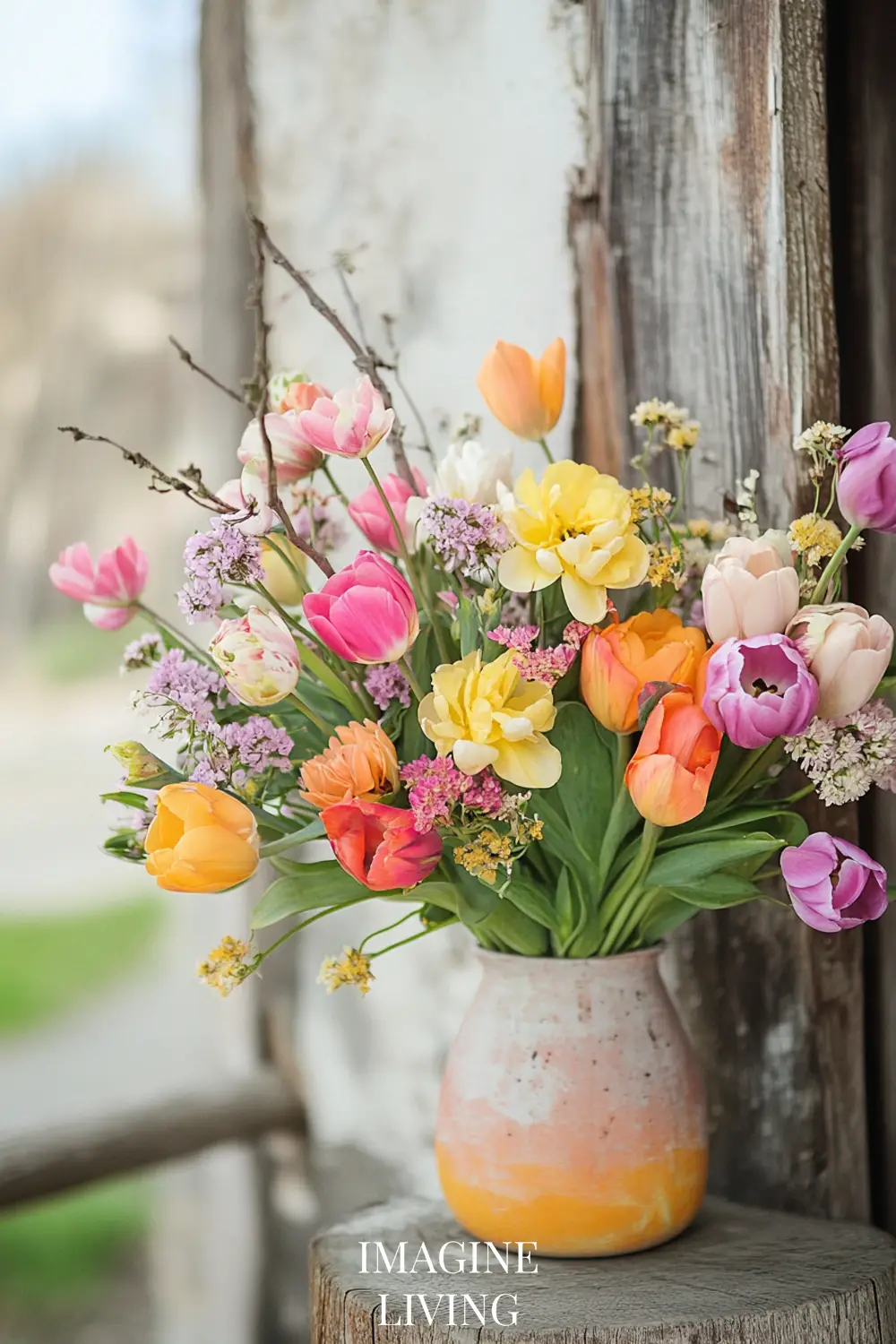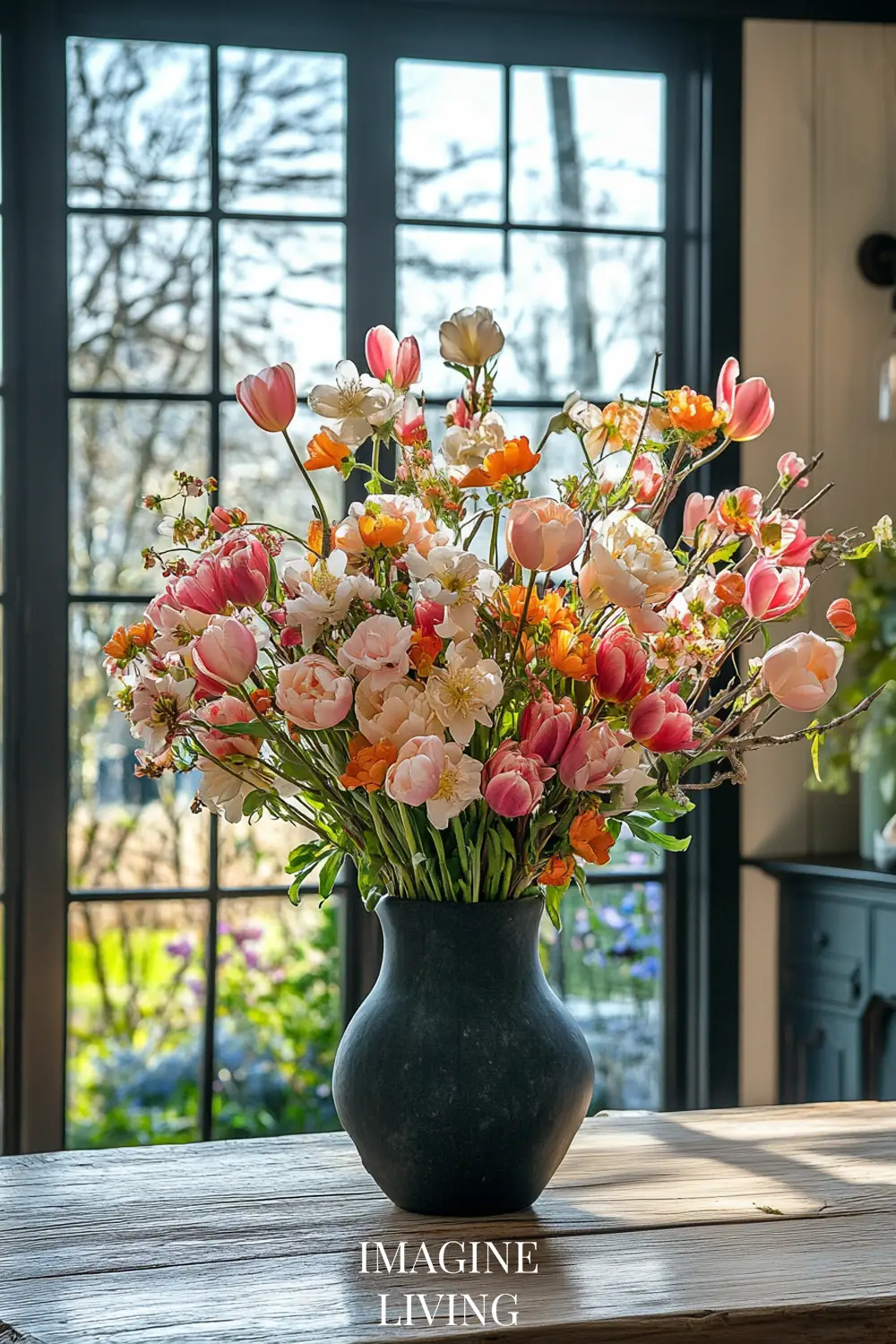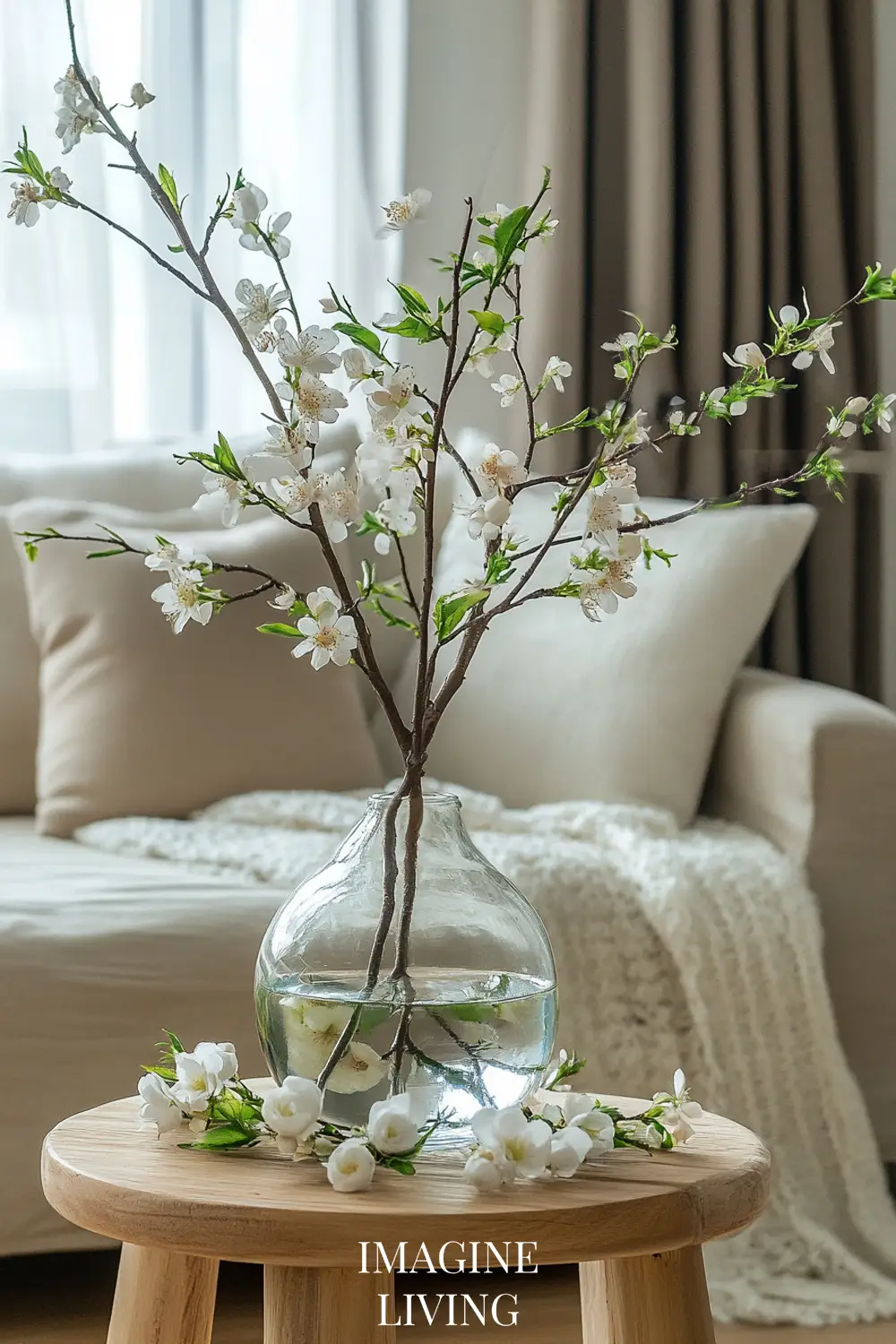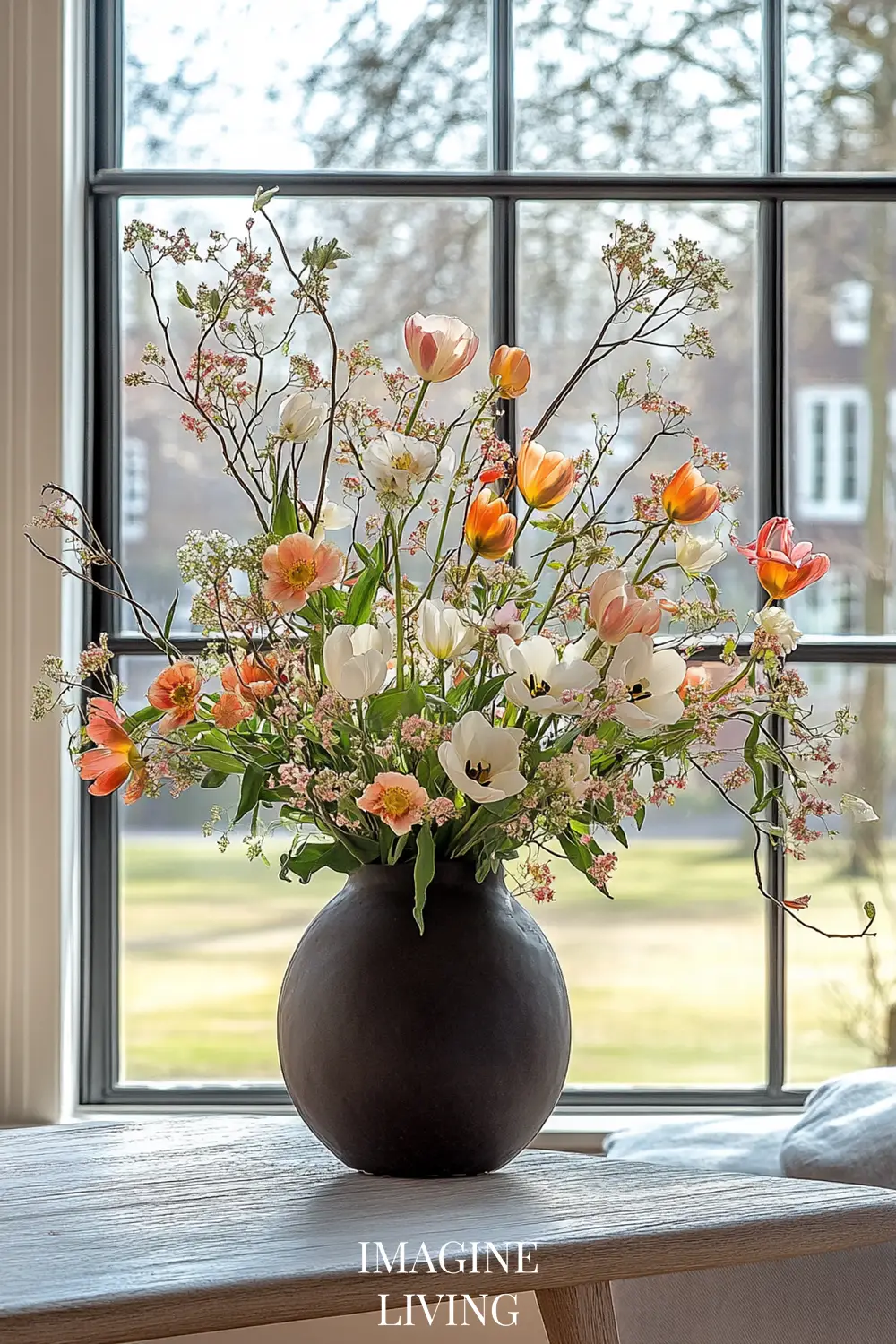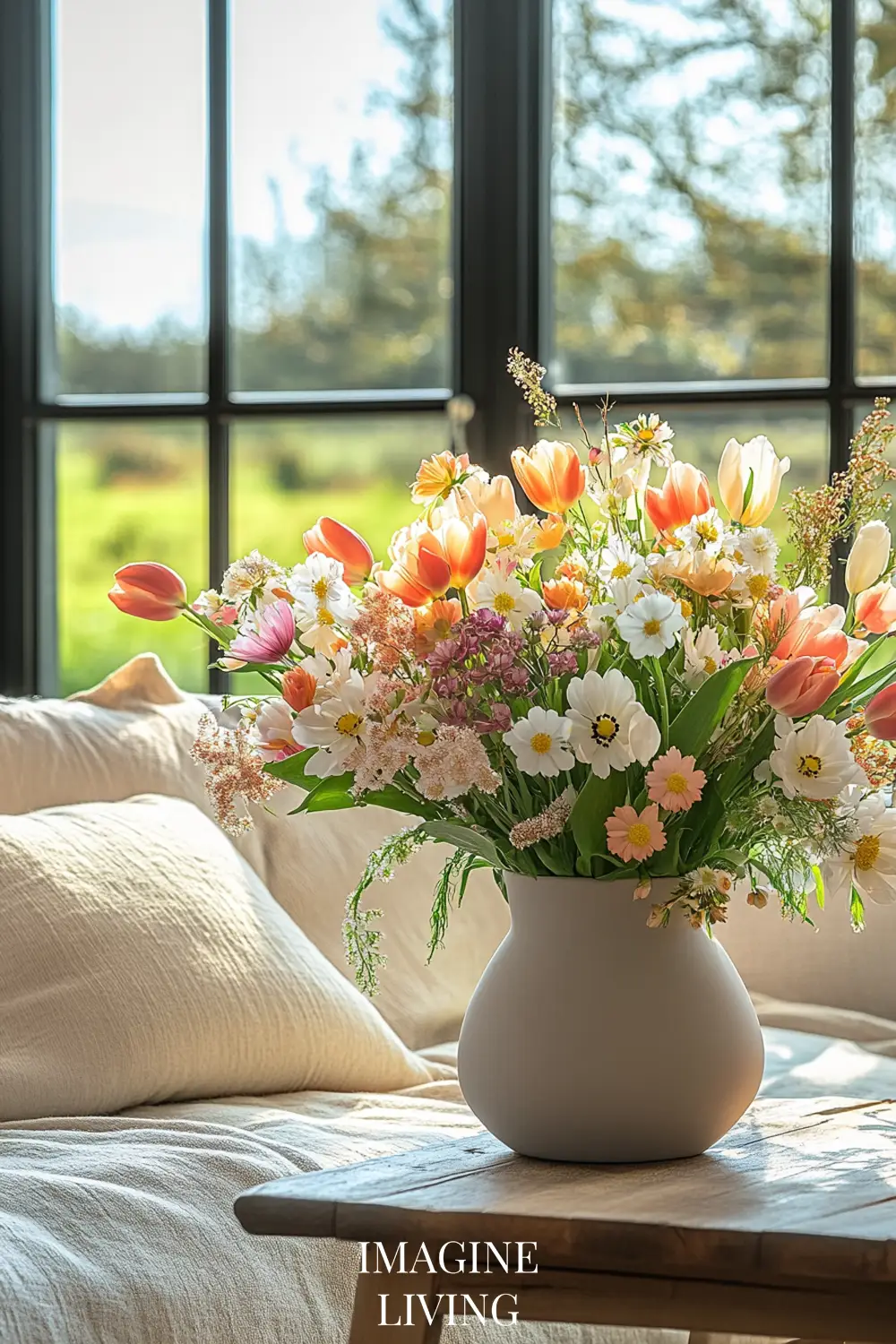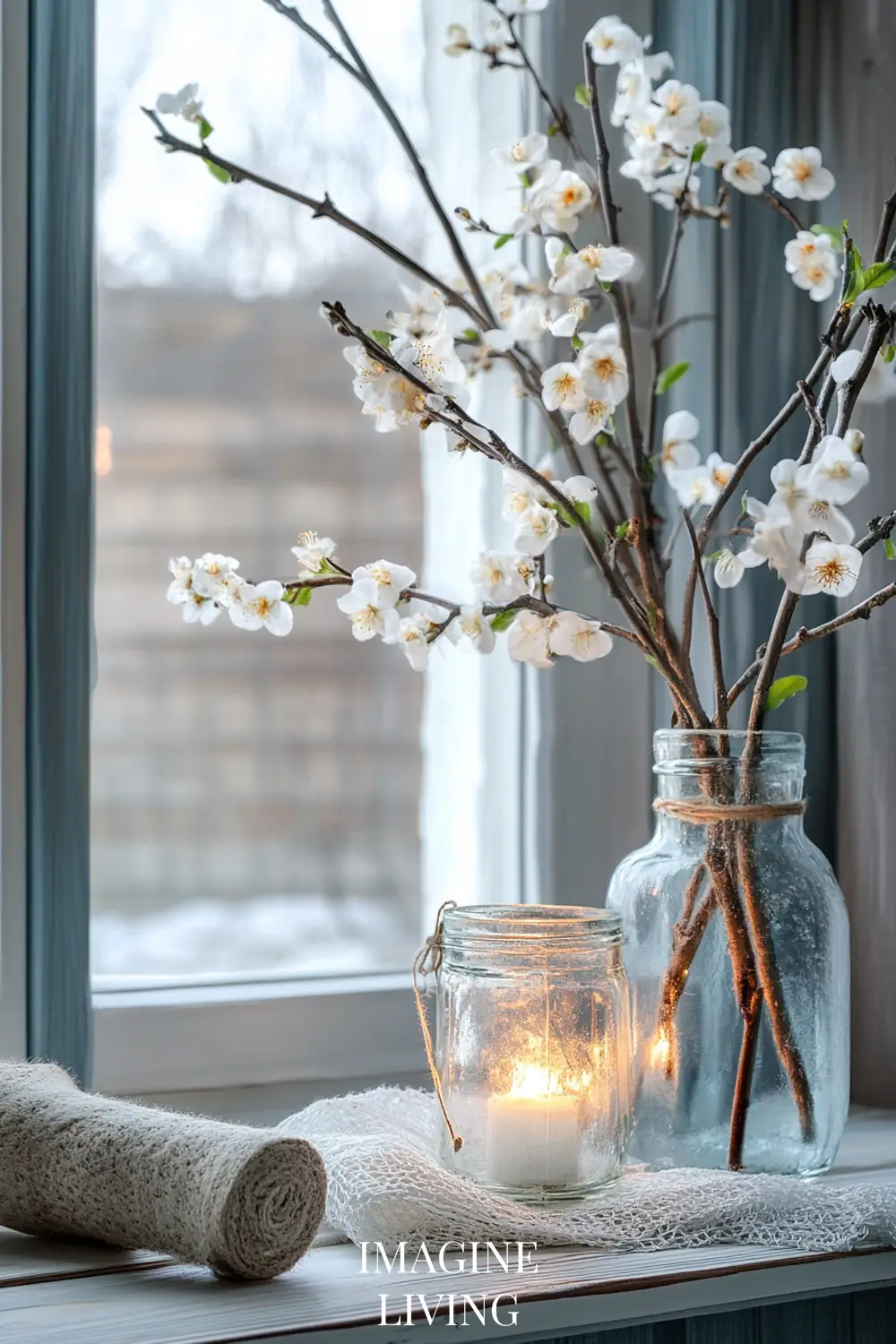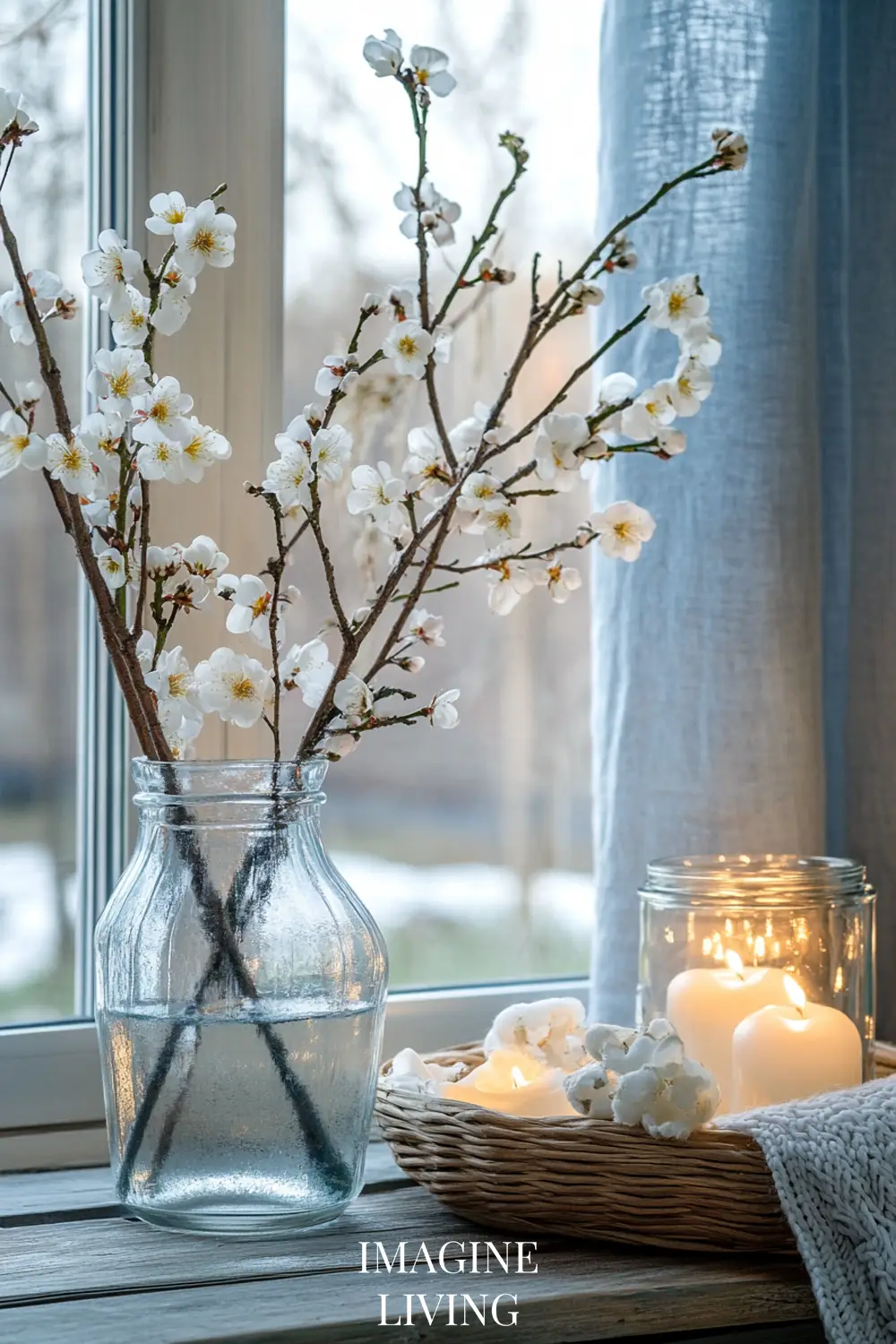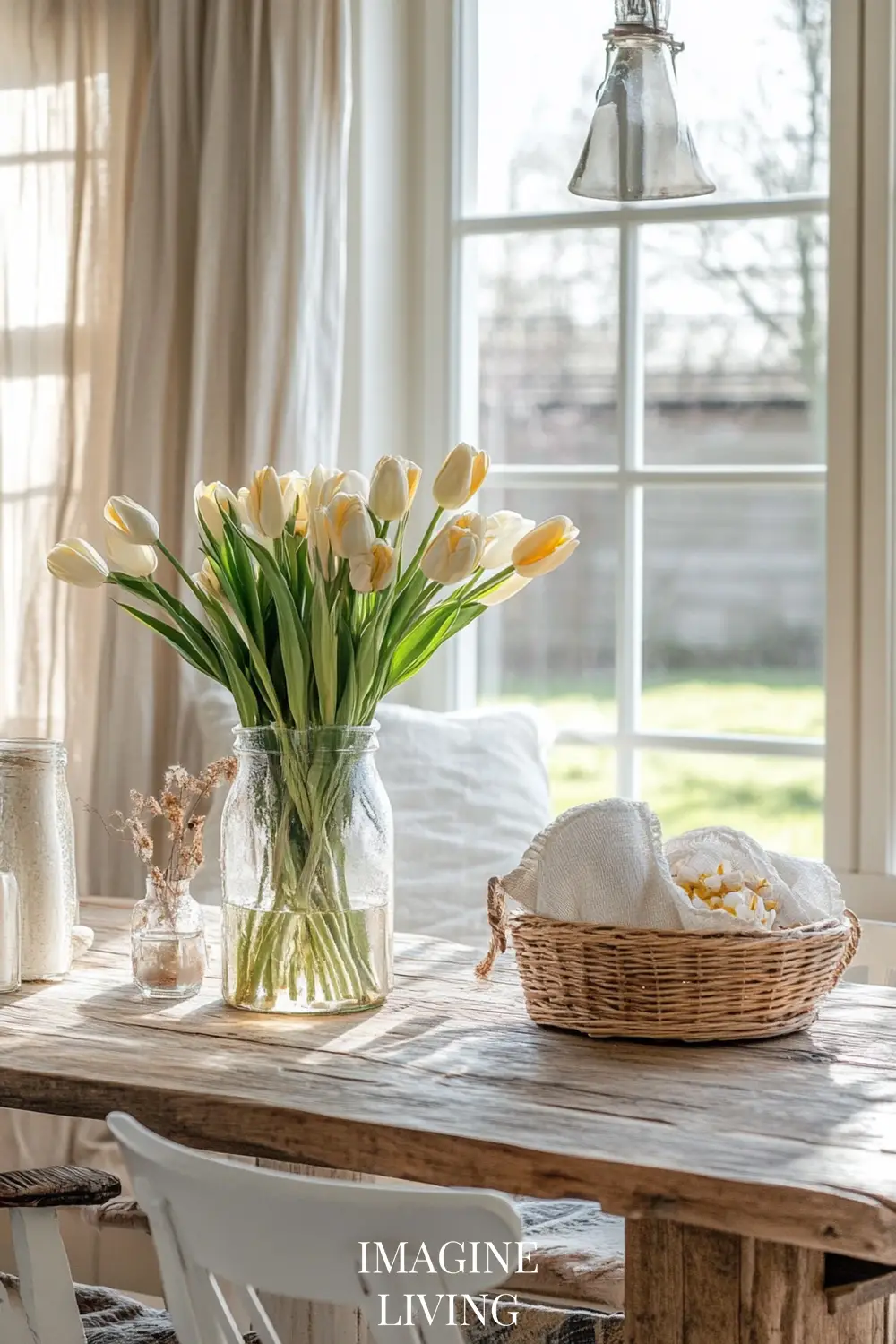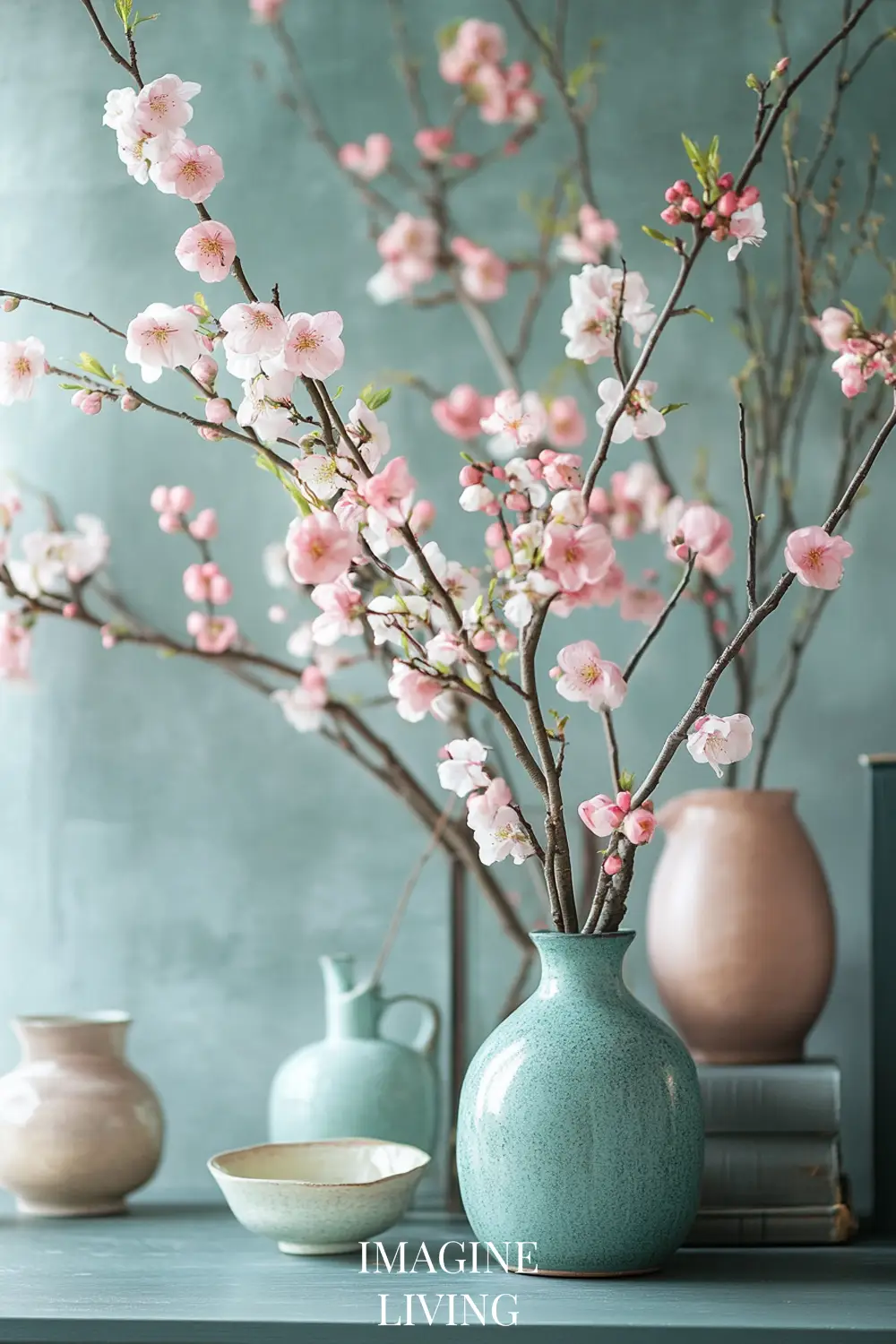The Art of Spring Bouquets: Wild Beauty Meets Classic Elegance
Welcome the Season with Breathtaking Spring Florals
As the days grow longer and the air fills with the scent of new blooms, spring offers the perfect opportunity to bring the essence of nature indoors. Whether you favor the unstructured beauty of wildflower bouquets or the refined elegance of classic spring arrangements, floral styling is a timeless way to celebrate the season.
Wild spring bouquets, with their natural movement and effortless charm, create an organic, garden-fresh look, while structured spring florals like tulips and cherry blossoms bring refined softness to any space. In this guide, we’ll explore stunning spring bouquets, breaking down their design, color choices, and expert styling tips to help you incorporate spring’s beauty into your home.
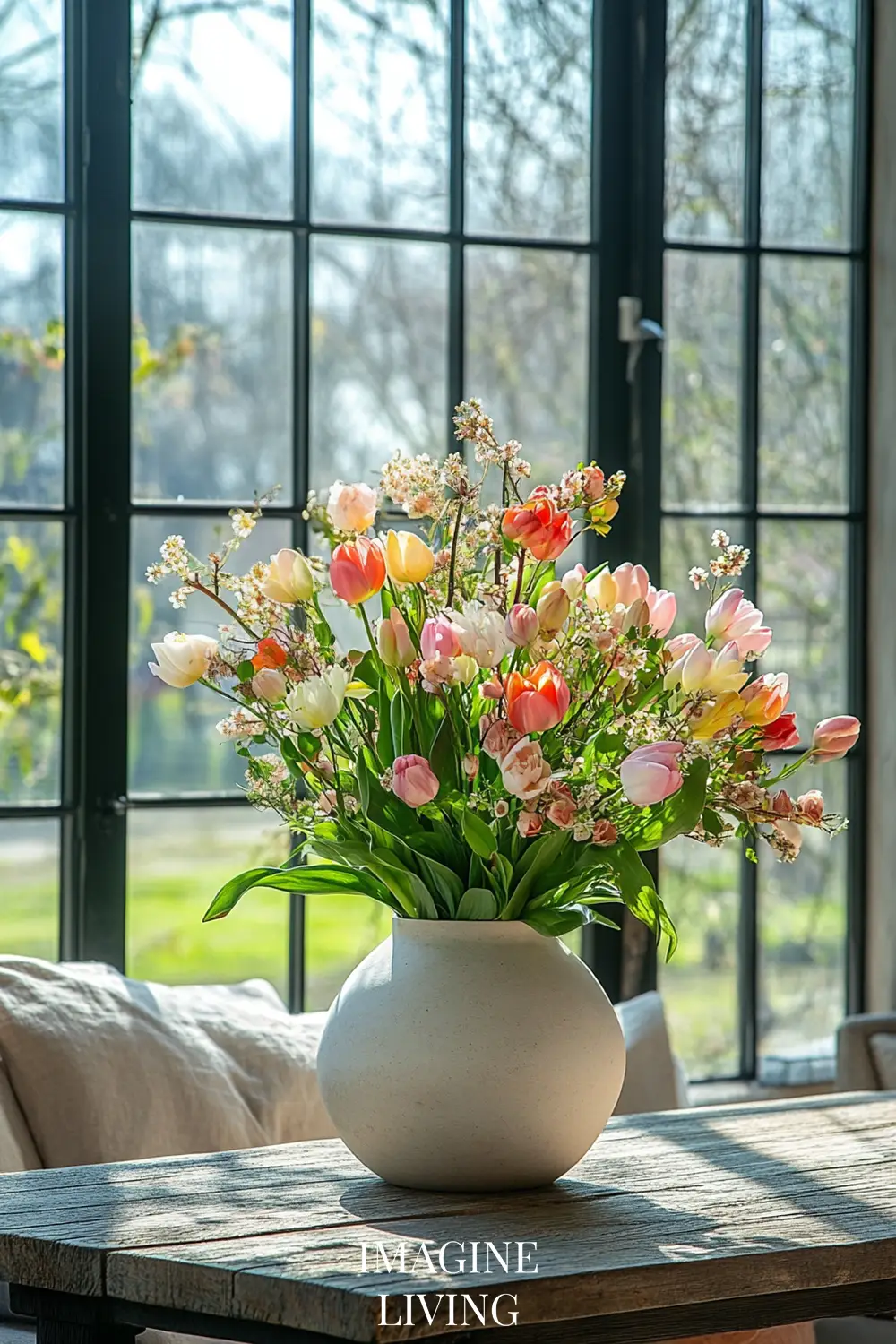
Spring Flowers Guide: Blooms That Define the Season
Spring’s floral variety offers an abundance of textures, colors, and fragrances. Below are some of the season’s most beloved flowers, each bringing a unique charm to bouquets.
Most Popular Spring Flowers & Their Meanings
- Tulips – Symbolize love, renewal, and fresh beginnings.
- Cherry Blossoms – Represent fleeting beauty and new life.
- Ranunculus – Associated with charm and radiant energy.
- Peonies – Signify prosperity and romance.
- Daffodils – The ultimate spring bloom, symbolizing renewal.
- Lilacs – Represent the first emotions of love and nostalgia.
- Hyacinths – Known for their strong fragrance and vibrant colors.
How to Keep Spring Bouquets Fresh
- Trim stems at an angle to increase water absorption.
- Remove excess leaves below the waterline to prevent bacterial growth.
- Change water every two days and keep flowers away from direct sunlight.

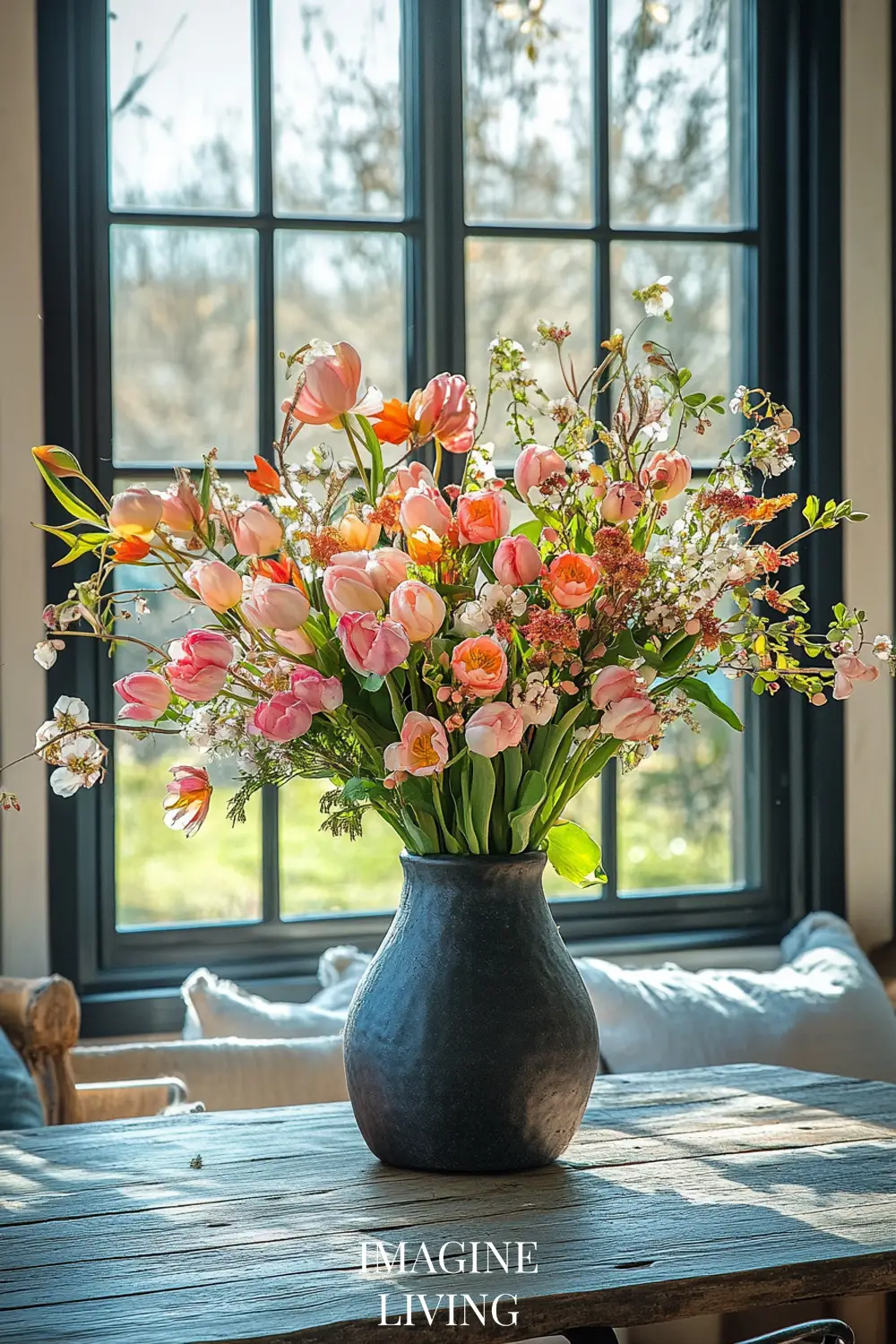
Wild and Free: The Charm of Natural Spring Bouquets
Wildflower-Inspired Bouquets for a Natural, Effortless Look
Spring is the season of renewal, and nothing captures its essence quite like a natural spring bouquet. These floral arrangements embrace the effortless charm of freshly gathered blooms, celebrating the beauty of the season in a way that feels organic, unstructured, and full of life. Unlike traditional, tightly arranged bouquets, natural spring bouquets are designed to look as if they were picked straight from a wildflower meadow or an abundant spring garden.
This aesthetic is all about flow, movement, and a sense of spontaneity—allowing each flower to shine in its own natural form. Whether you prefer a soft, airy arrangement with blossoming branches or a lush, abundant display of seasonal favorites, a natural bouquet brings warmth, vibrancy, and an organic feel to any home.
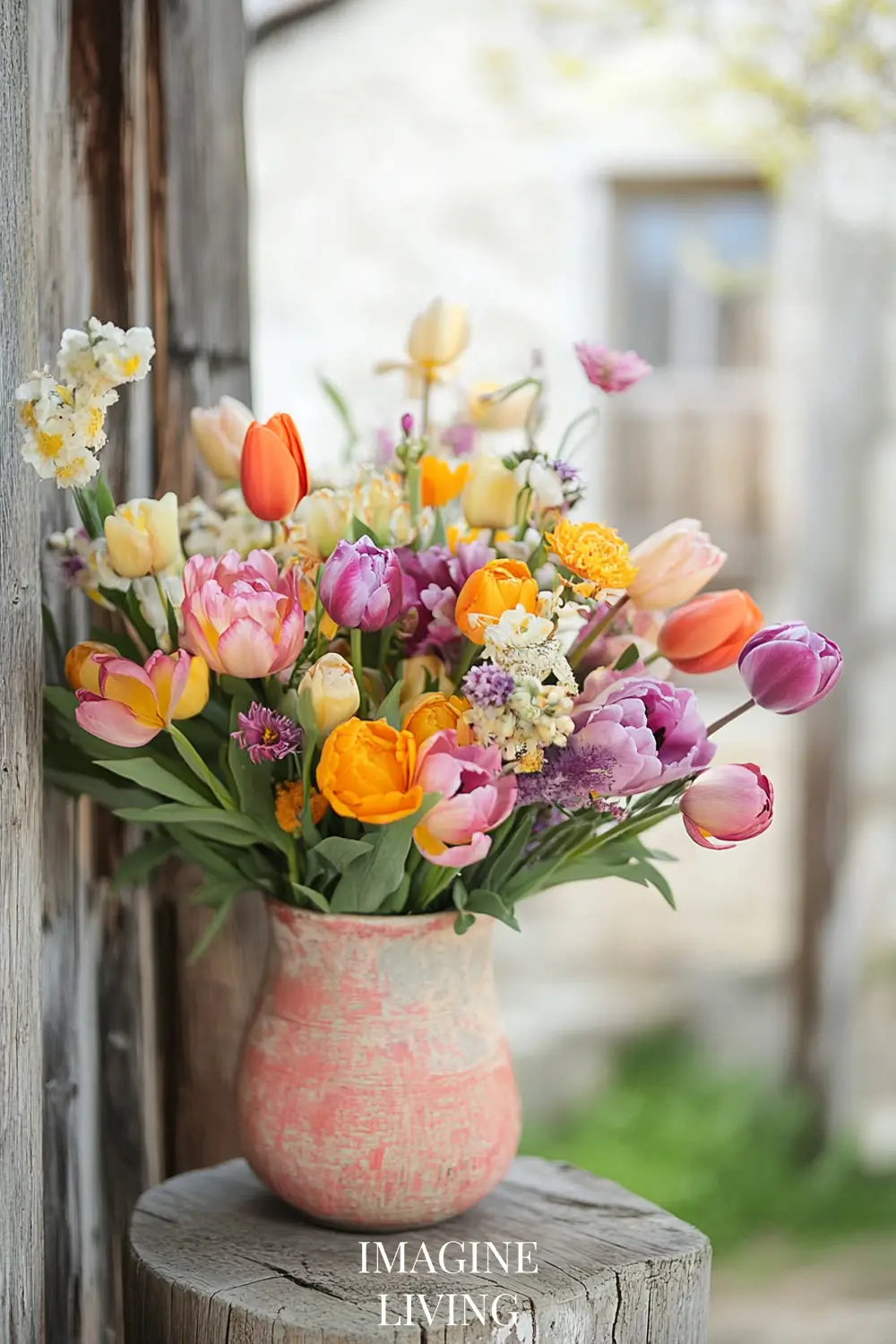

Key Features of Wild Bouquets
- Loose and Airy Composition – The structure feels fresh and uncontrived, with branches, wispy greenery, and asymmetry creating movement.
- Unexpected Color Pairings – Blush pinks, warm oranges, and delicate creams blend seamlessly for a naturally balanced aesthetic.
- Organic Textures – Wildflower arrangements often include textured elements like dried grasses, berry branches, and blooming twigs.
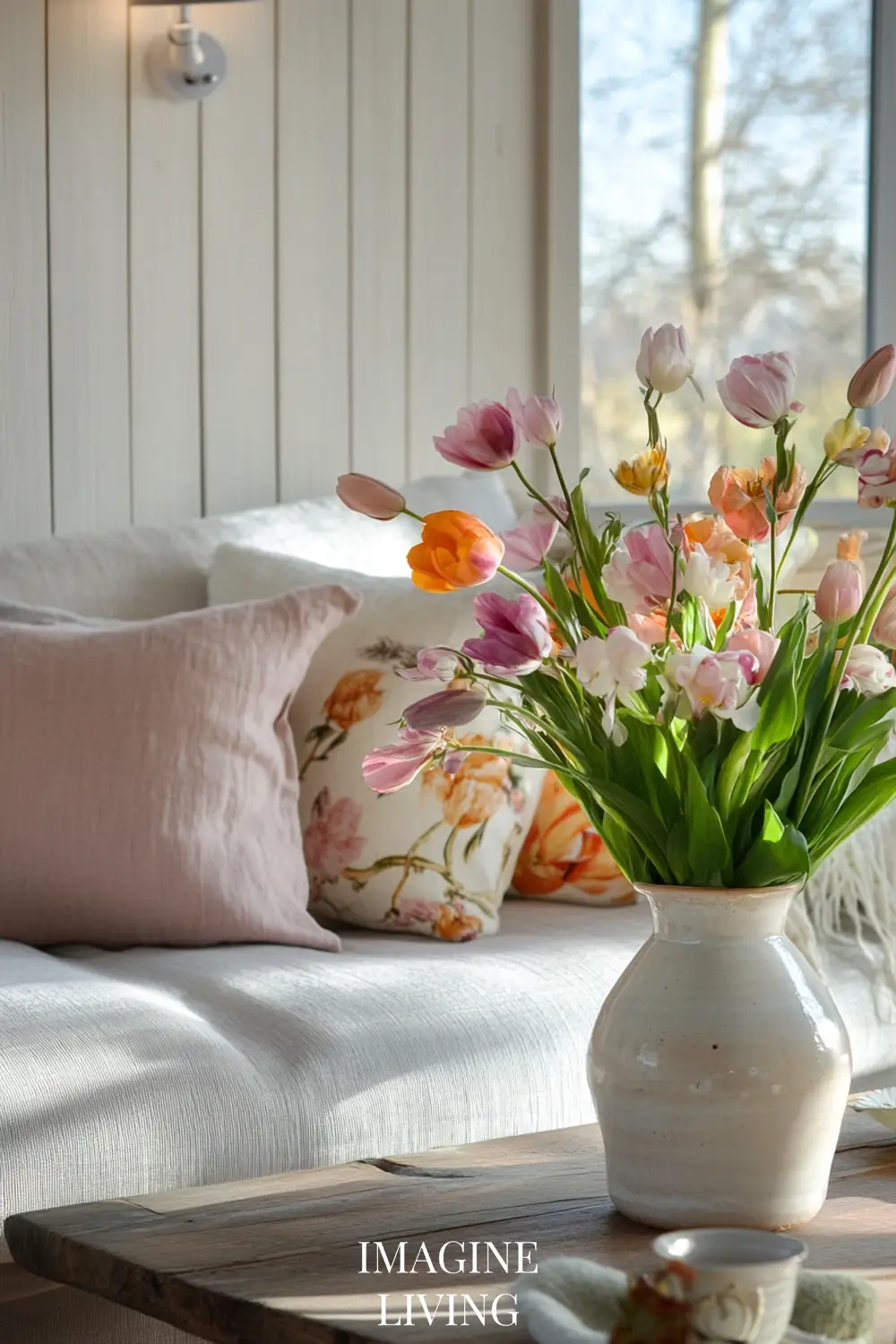
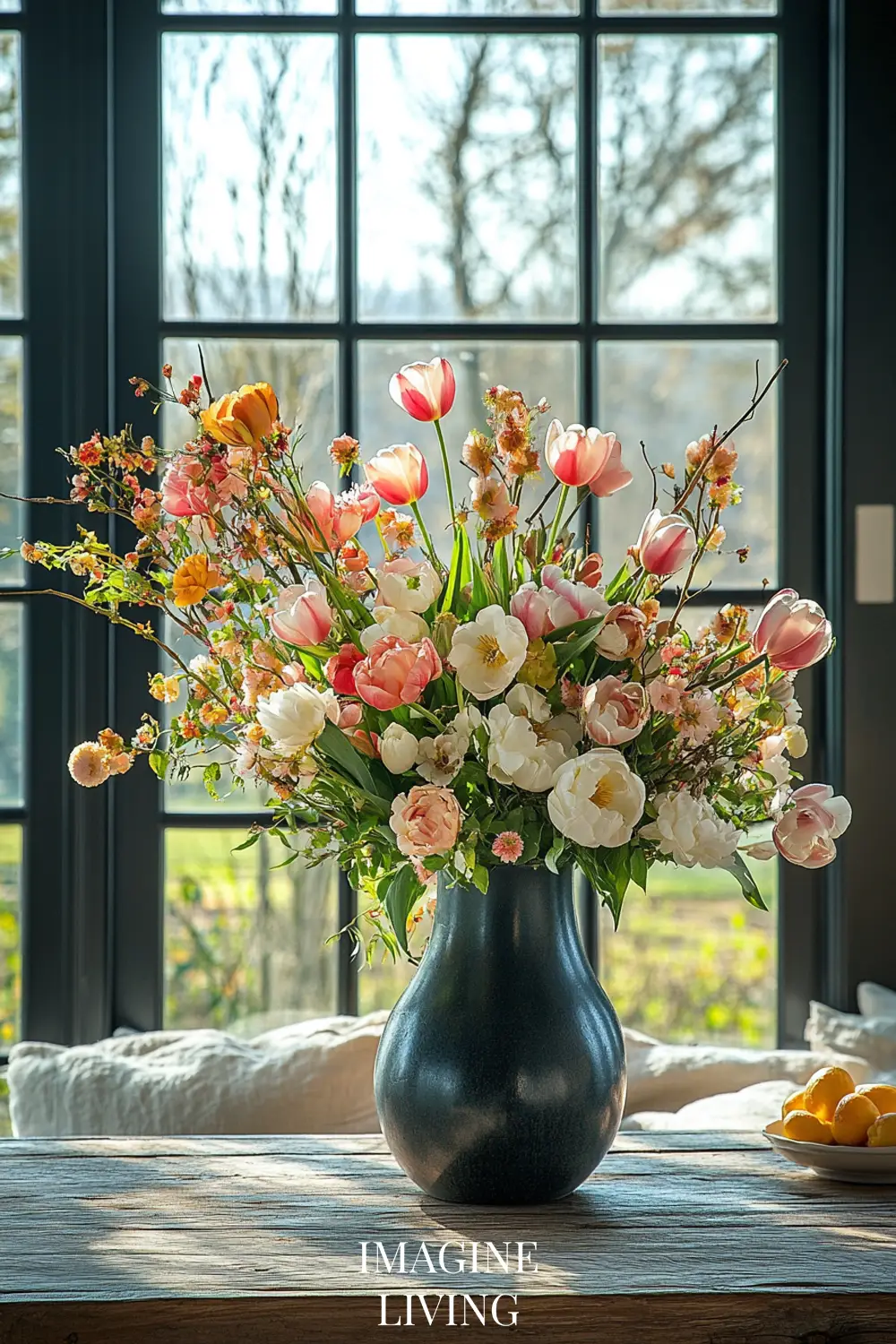
What Defines a Natural Spring Bouquet?
A natural spring bouquet isn’t just about selecting seasonal flowers—it’s about arranging them in a way that enhances their organic movement. Here are the key elements that define this style:
1. Seasonal and Locally Inspired Flowers
A true natural spring bouquet focuses on flowers that are in bloom during the season. These include:
- Tulips – The quintessential spring bloom, available in soft pastels and vibrant hues.
- Cherry Blossoms or Apple Blossoms – Delicate and airy, adding movement and a whimsical touch.
- Ranunculus – Their ruffled petals bring a soft, romantic texture.
- Daffodils – Cheerful and bright, evoking the first signs of spring.
- Lilacs – Fragrant and full, lending depth and volume to an arrangement.
- Wildflowers – Such as daisies, anemones, or bluebells, for a naturally untamed effect.
Using flowers that reflect the season helps create an authentic and fresh feel, as if they were just gathered from a flourishing garden.
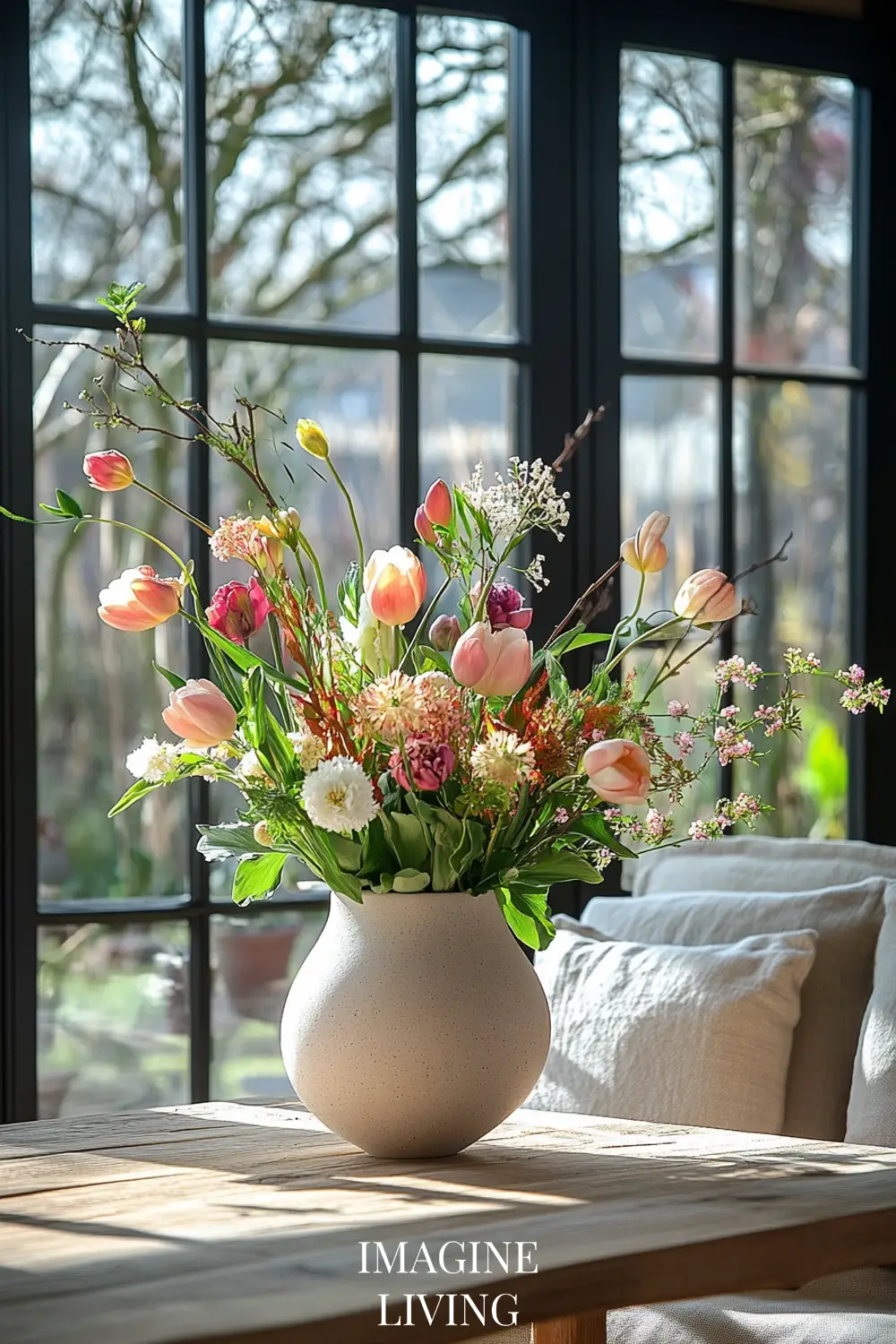
2. An Unstructured, Flowing Composition
Unlike formal floral arrangements, natural bouquets allow for movement, layering, and negative space. The goal is to mimic how flowers grow in nature, with varying heights, cascading stems, and a soft, effortless shape. Instead of forcing symmetry, let each bloom settle into its own unique place.
How to achieve this:
- Start with taller, airy stems like cherry blossoms or eucalyptus.
- Layer in mid-height flowers like tulips and ranunculus.
- Fill in with wildflowers or delicate filler blooms for softness.
- Let some greenery spill over naturally for an organic touch.

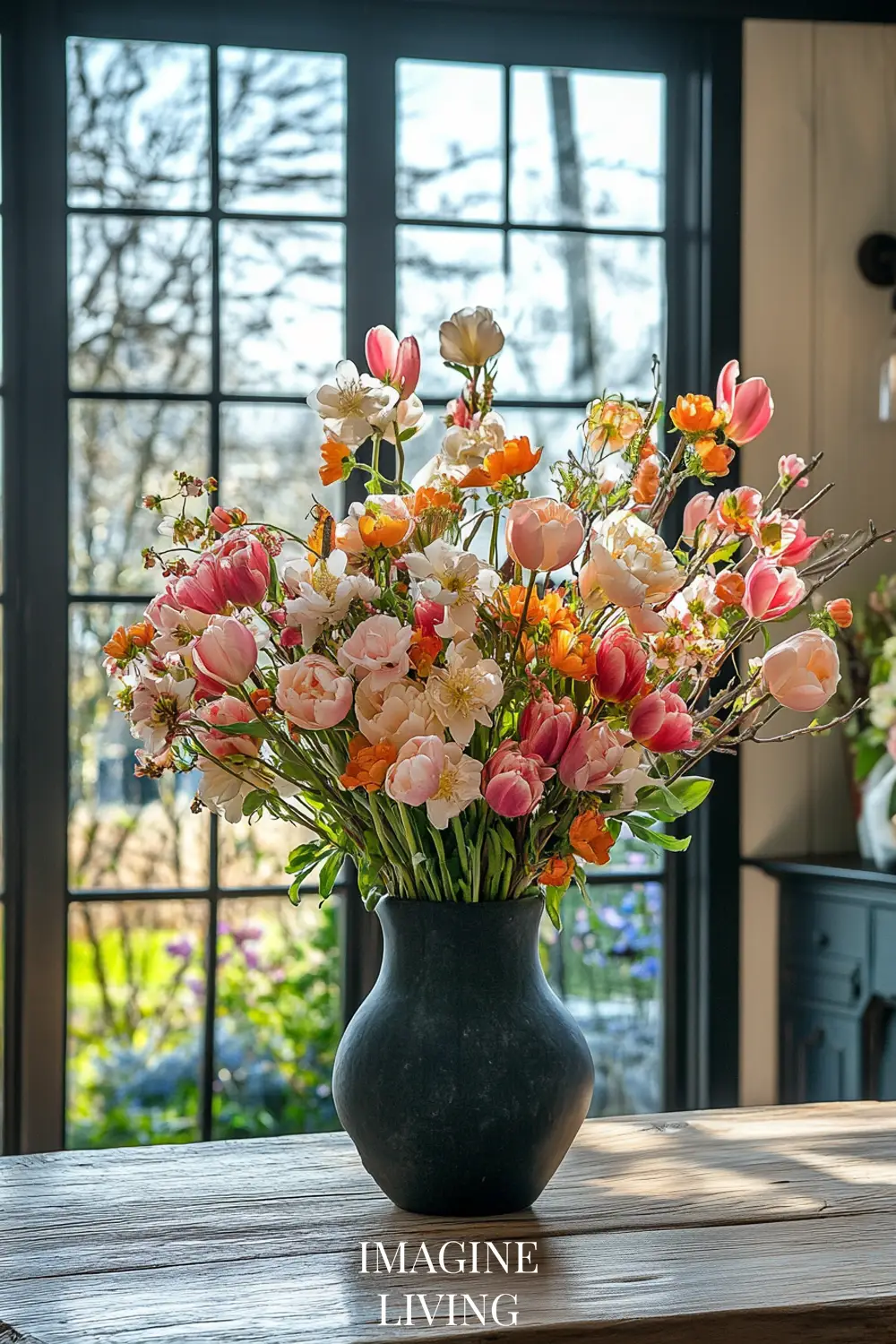
3. A Harmonious Color Palette Inspired by Nature
The colors in a natural spring bouquet should feel fresh, light, and organic. Some timeless spring color schemes include:
- Soft Pastels: Blush pink, pale yellow, creamy white, and lavender for a romantic and delicate feel.
- Warm Earthy Tones: Peach, terracotta, muted coral, and soft beige for a rustic yet elegant vibe.
- Bright and Cheerful: Vibrant yellows, rich oranges, and pops of deep pink for a lively and energetic touch.
Tip: Stick to three to four complementary colors for a visually cohesive look. A natural bouquet doesn’t need to match perfectly—subtle contrast adds to the effortless charm.

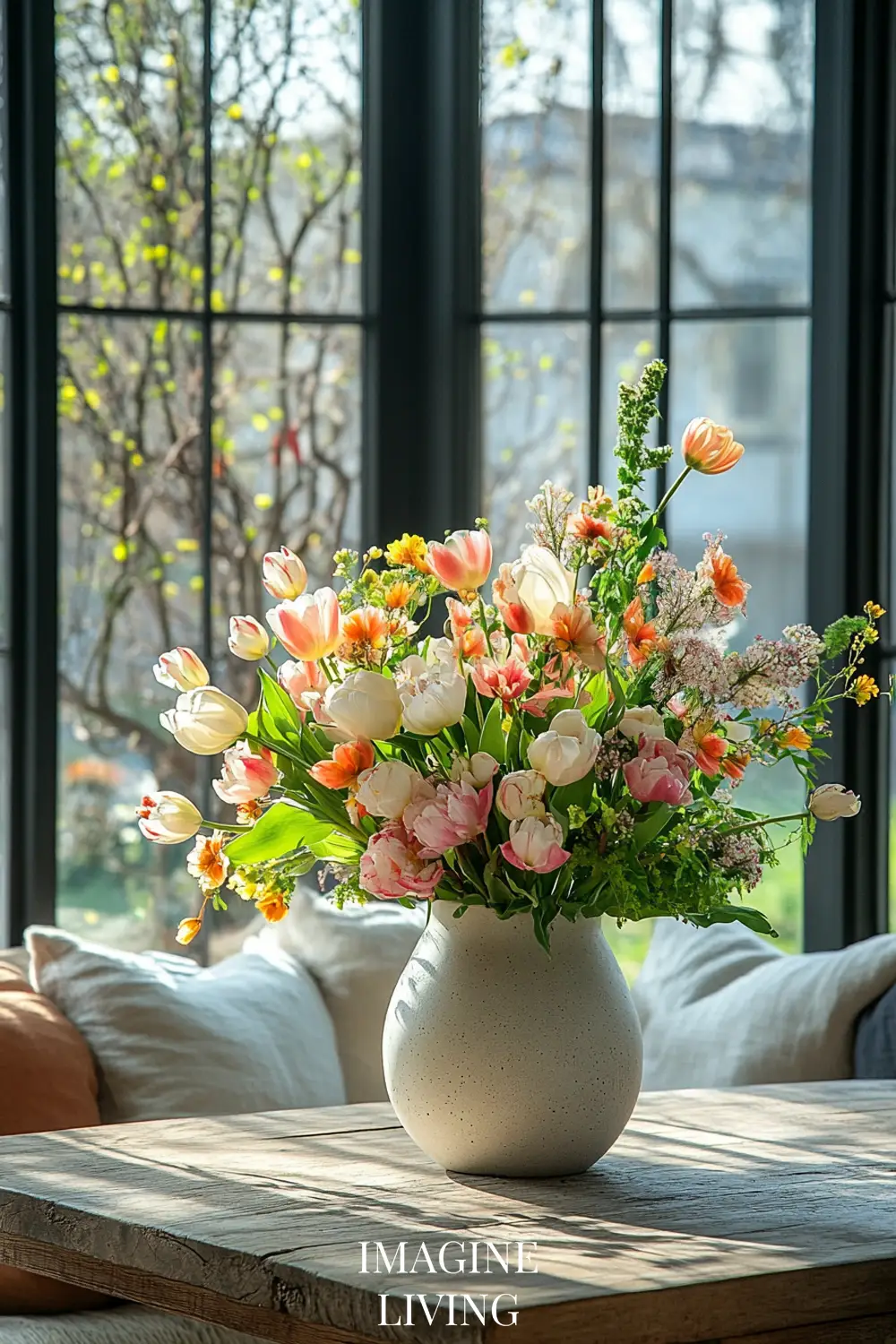

4. Textures That Enhance the Organic Feel
A mix of textures makes a bouquet feel dynamic and visually interesting. Combine:
- Silky petals (tulips, ranunculus)
- Fluffy blooms (lilacs, peonies)
- Delicate blossoms (cherry branches, baby’s breath)
- Wild greenery (eucalyptus, ruscus, olive branches)
The key is to layer different textures while maintaining an airy feel rather than a dense, packed look.

5. A Vase That Complements the Natural Style
The vase plays a crucial role in how the bouquet is perceived. For a true natural spring bouquet, opt for:
- Organic shapes: Rounded, hand-thrown ceramic vases or glass jars.
- Matte and earthy finishes: Stoneware, raw clay, or soft glazed textures.
- Neutral tones: Beige, cream, charcoal, or muted pastels that highlight the flowers rather than overpower them.
A vase that feels handcrafted enhances the natural aesthetic, giving the bouquet an effortless, collected-from-nature appeal.
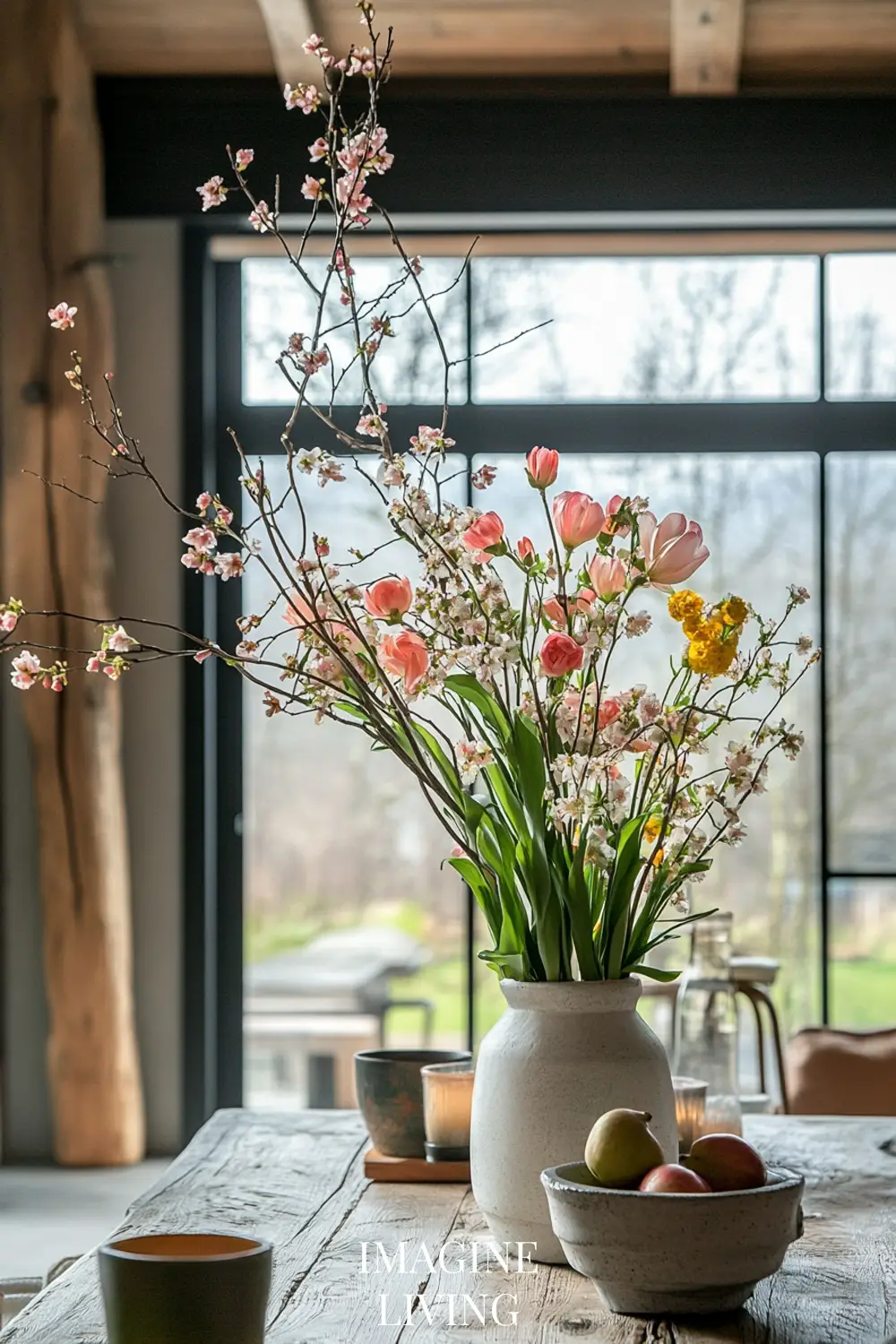
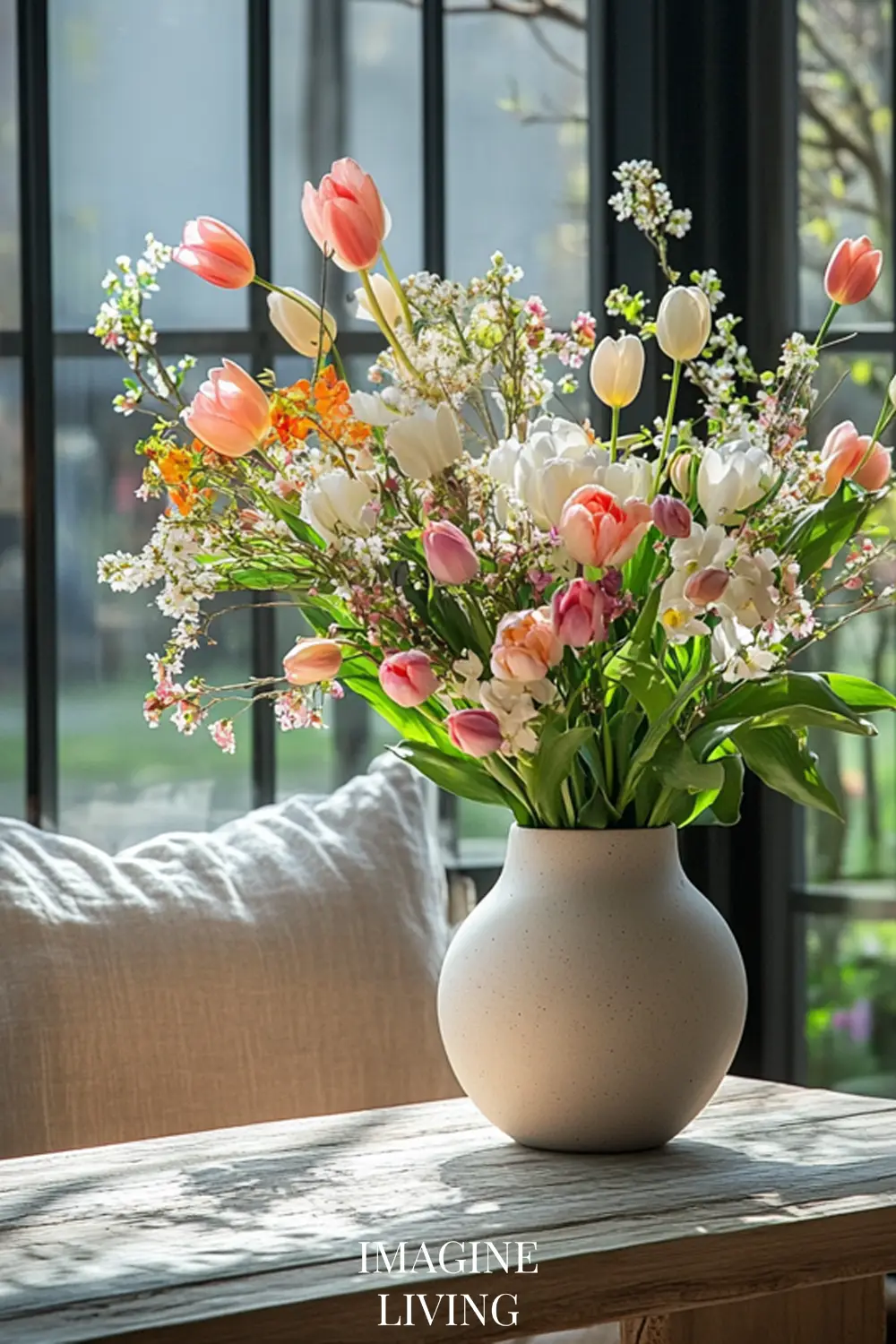
Why Choose a Natural Spring Bouquet?
A natural bouquet brings the essence of spring indoors without looking overly polished or artificial. It’s perfect for:
- Casual home decor – Whether placed on a dining table, kitchen counter, or bedside, it instantly brightens a space.
- Seasonal styling – These bouquets feel fresh and timely, making them perfect for spring gatherings.
- Mindful decorating – Using locally sourced, in-season flowers is a sustainable way to style your home.
Embracing the beauty of imperfection, a natural spring bouquet captures the effortless elegance of the season, making any space feel alive with fresh, organic charm.


Classic Elegance: Timeless Spring Bouquets
The Beauty of Traditional Spring Florals
While wild bouquets embrace spontaneity, classic spring arrangements celebrate symmetry and refinement.


Key Features of Classic Spring Bouquets
- Soft, Curated Color Palettes – Think pastel pinks, crisp whites, and fresh greens for an airy, romantic feel.
- Structured Shapes – Classic bouquets are designed with a balanced, layered approach to highlight each bloom.
- Focus on Signature Blooms – Traditional arrangements emphasize a single statement flower, like tulips, cherry blossoms, or peonies.
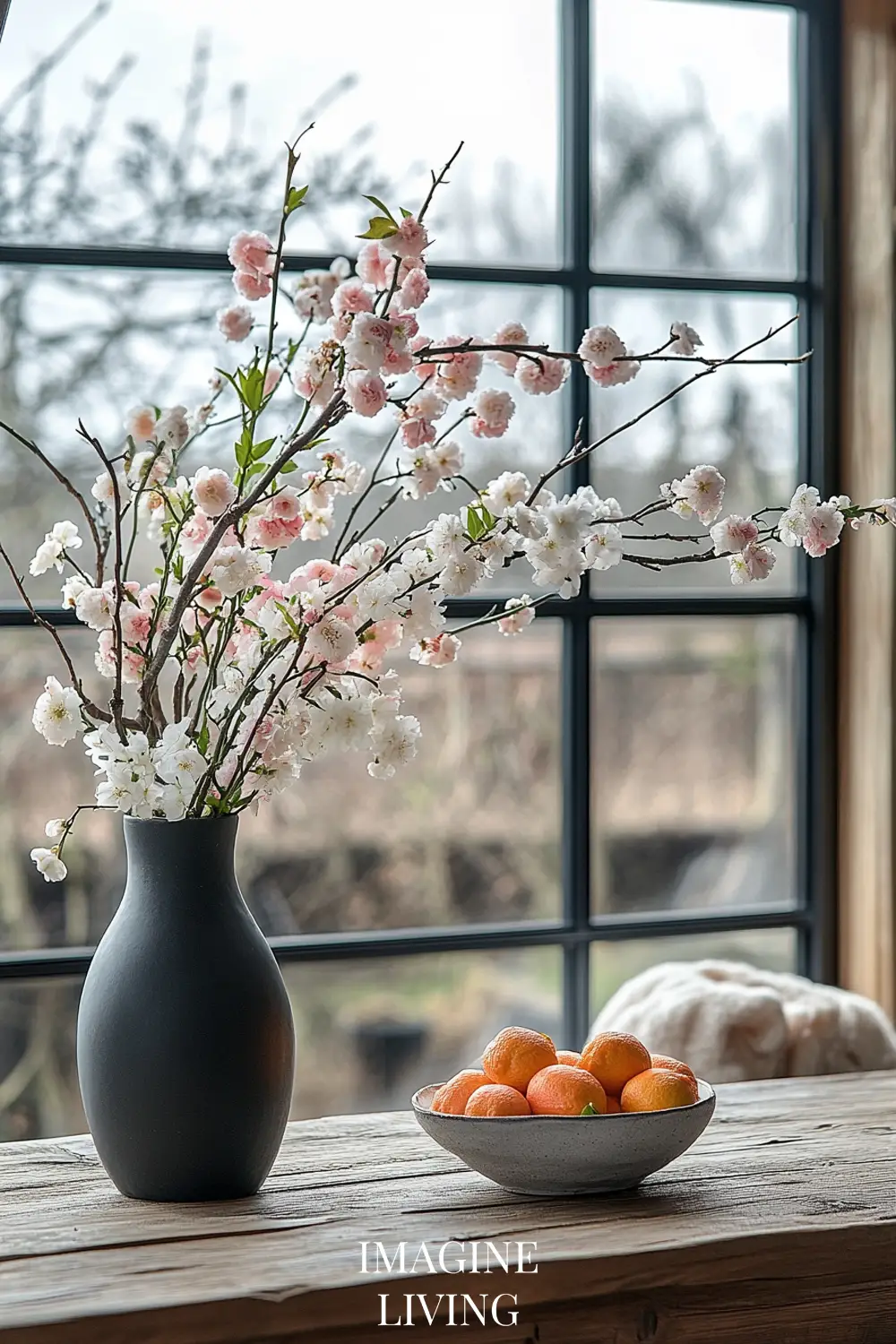
Featured Classic Bouquet
A delicate arrangement of soft pink cherry blossoms in a matt-black ceramic vase embodies light, effortless elegance, with its airy structure and timeless appeal.
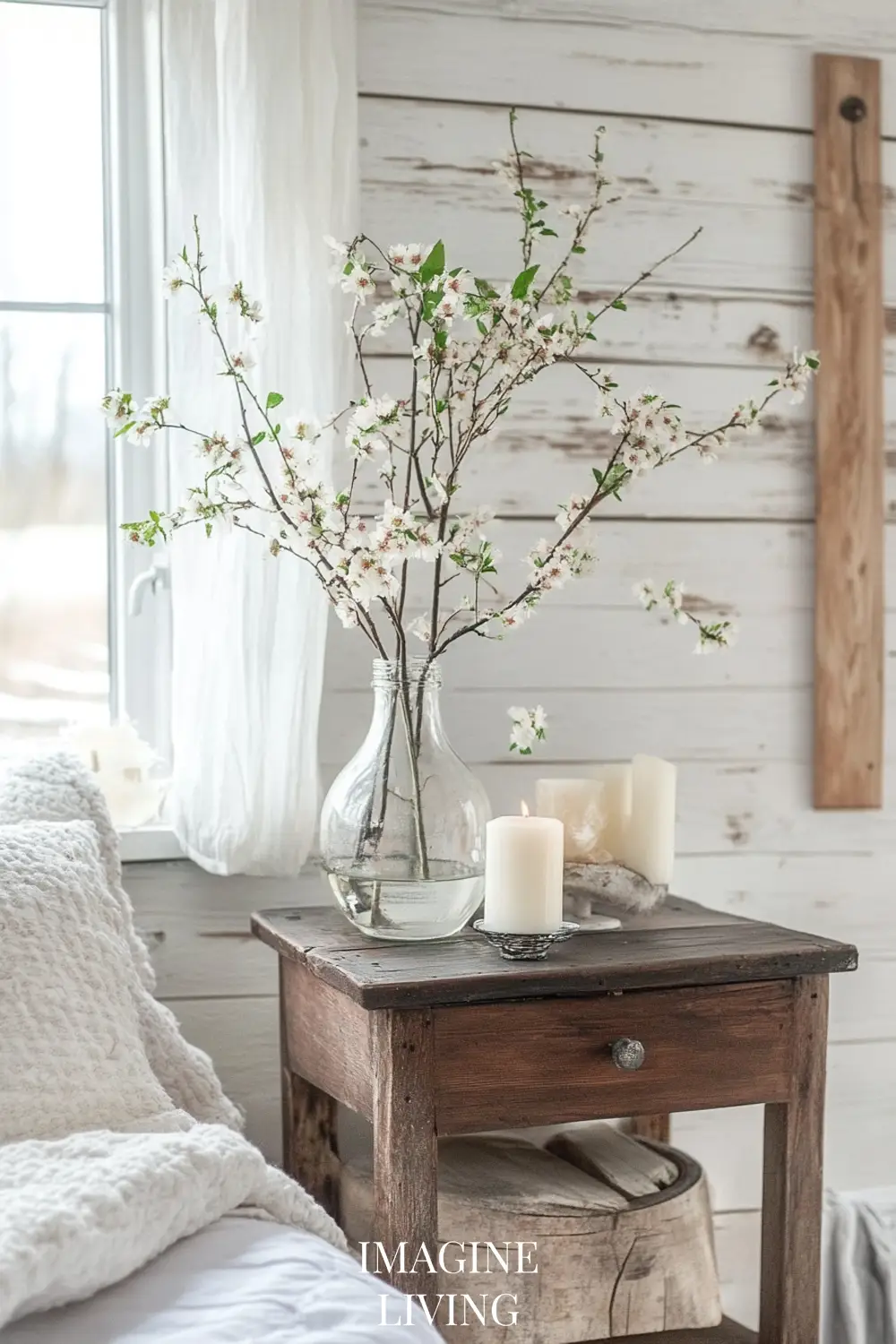
How to Arrange a Stunning Spring Bouquet at Home
Creating a breathtaking spring bouquet at home is easier than you think! Whether you prefer a wild, garden-fresh aesthetic or a refined, classic arrangement, following these steps will help you craft a visually balanced and long-lasting bouquet.
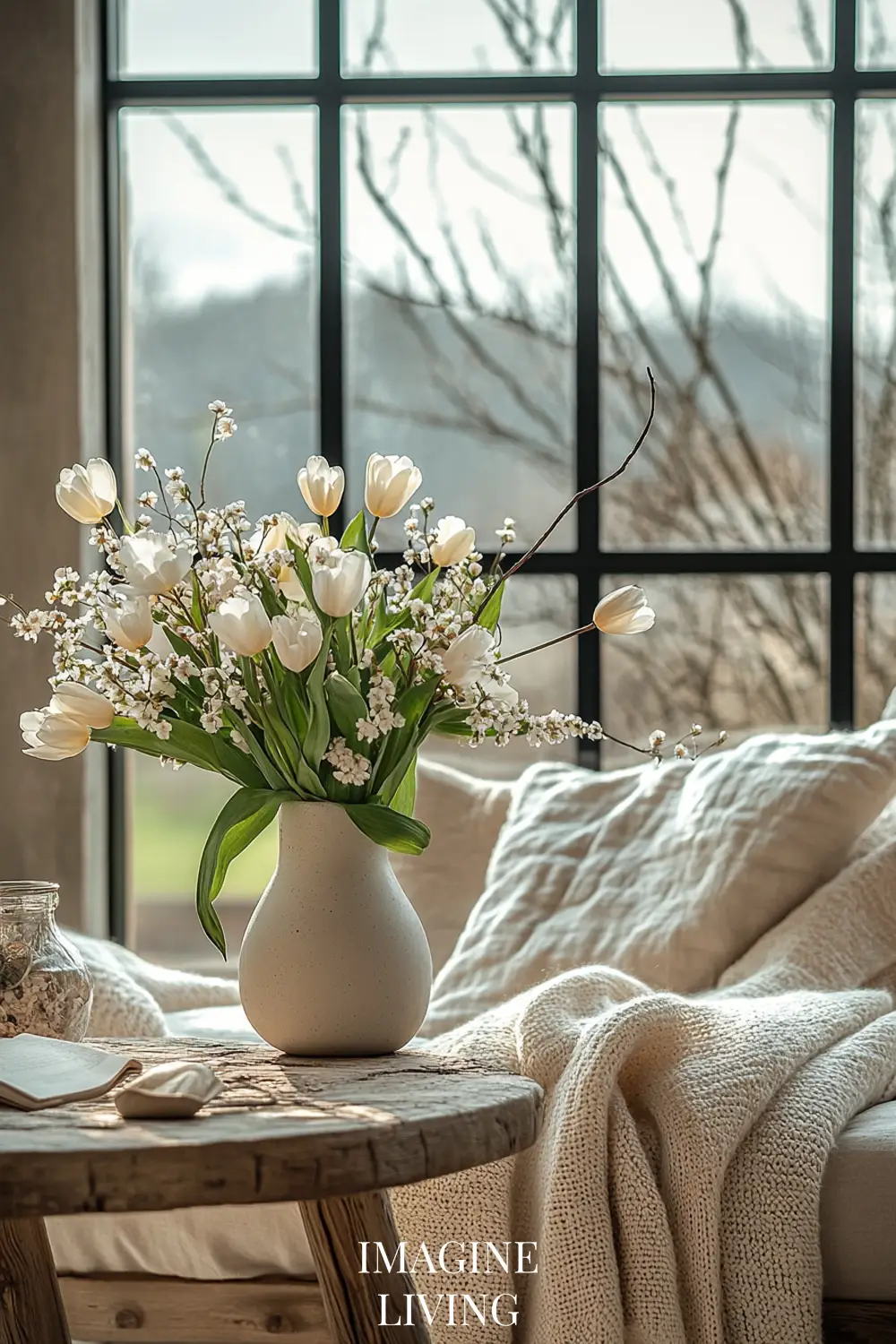
Step-by-Step Guide to Floral Styling
1. Choose Your Color Palette
Start by deciding on the overall mood and color scheme of your bouquet. Spring flowers offer a beautiful range of colors, from soft pastels to bold, vibrant hues.
- Soft & Romantic: Blush pinks, creamy whites, lavender, and soft yellow create an ethereal and airy feel.
- Bright & Cheerful: Orange tulips, deep coral ranunculus, and sunny daffodils bring warmth and energy.
- Earthy & Natural: Muted beige, warm greens, and terracotta tones evoke an organic, rustic charm.
💡 Tip: If you’re unsure, stick to a three-color rule—select one dominant color, a secondary complement, and a neutral to balance the arrangement.

2. Select Your Focal Flower
A strong focal flower serves as the heart of your arrangement. Choose one or two hero blooms that will stand out in size, color, or texture.
Great focal flowers for spring bouquets:
- Tulips – Elegant, timeless, and available in multiple hues.
- Peonies – Lush and full-bodied, adding a romantic feel.
- Ranunculus – Layered petals that bring depth and texture.
- Cherry Blossoms – Tall and airy, perfect for a sculptural effect.
💡 Tip: If you want a soft and organic look, mix two types of focal flowers for natural movement and dimension.

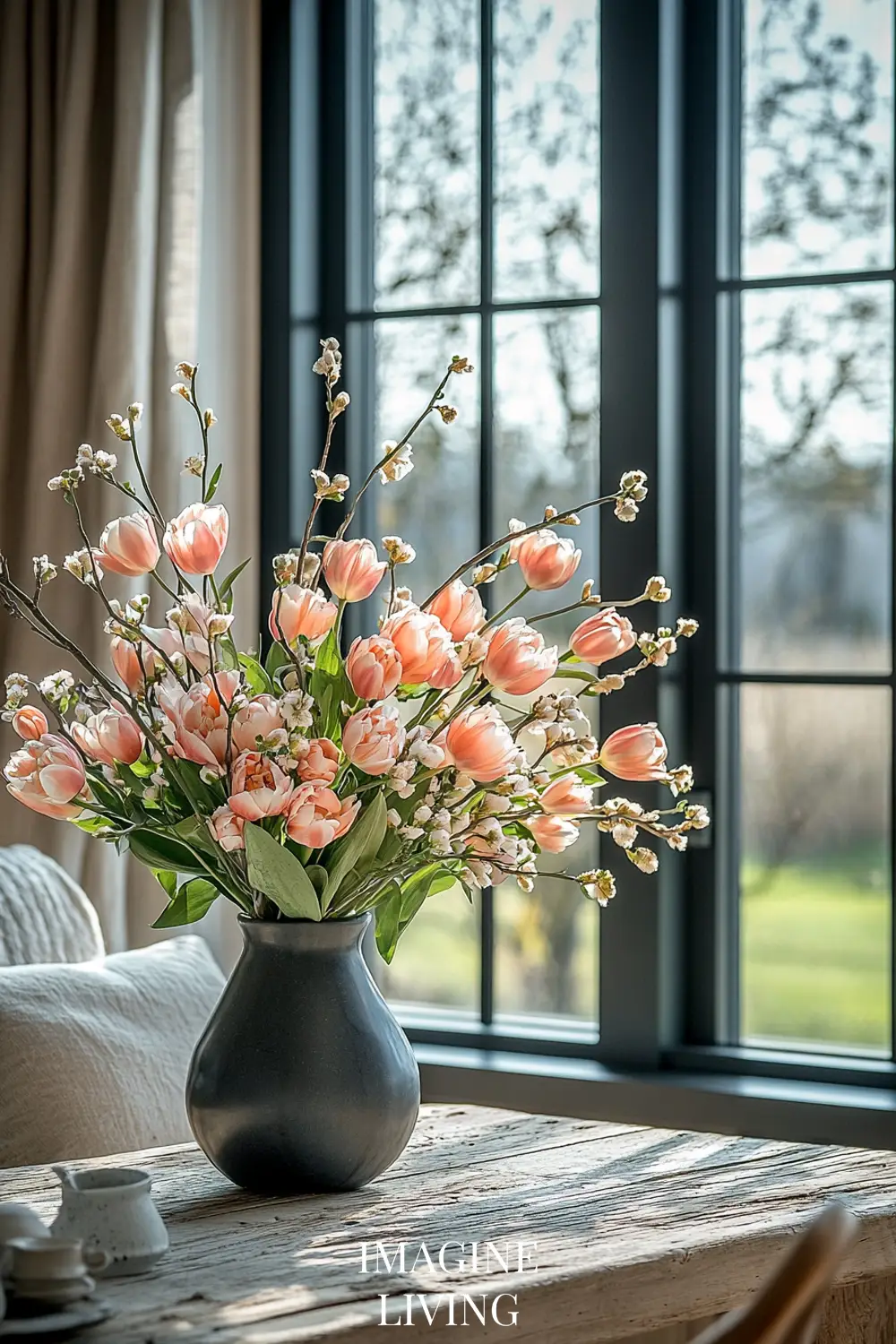
3. Layer with Greenery & Texture
Greenery plays a crucial role in bouquet design, adding depth, movement, and a touch of nature. Some greenery works best for structure, while others add a soft, delicate flow.
Best greenery and filler flowers for spring bouquets:
- Eucalyptus – Adds soft, trailing movement.
- Fern leaves – Brings a structured, natural feel.
- Waxflower or Baby’s Breath – Tiny blooms to fill in gaps.
- Berry Branches – Create contrast with pops of texture.
💡 Tip: Avoid overpowering your bouquet with too much greenery—use it to highlight, not overshadow, the flowers.
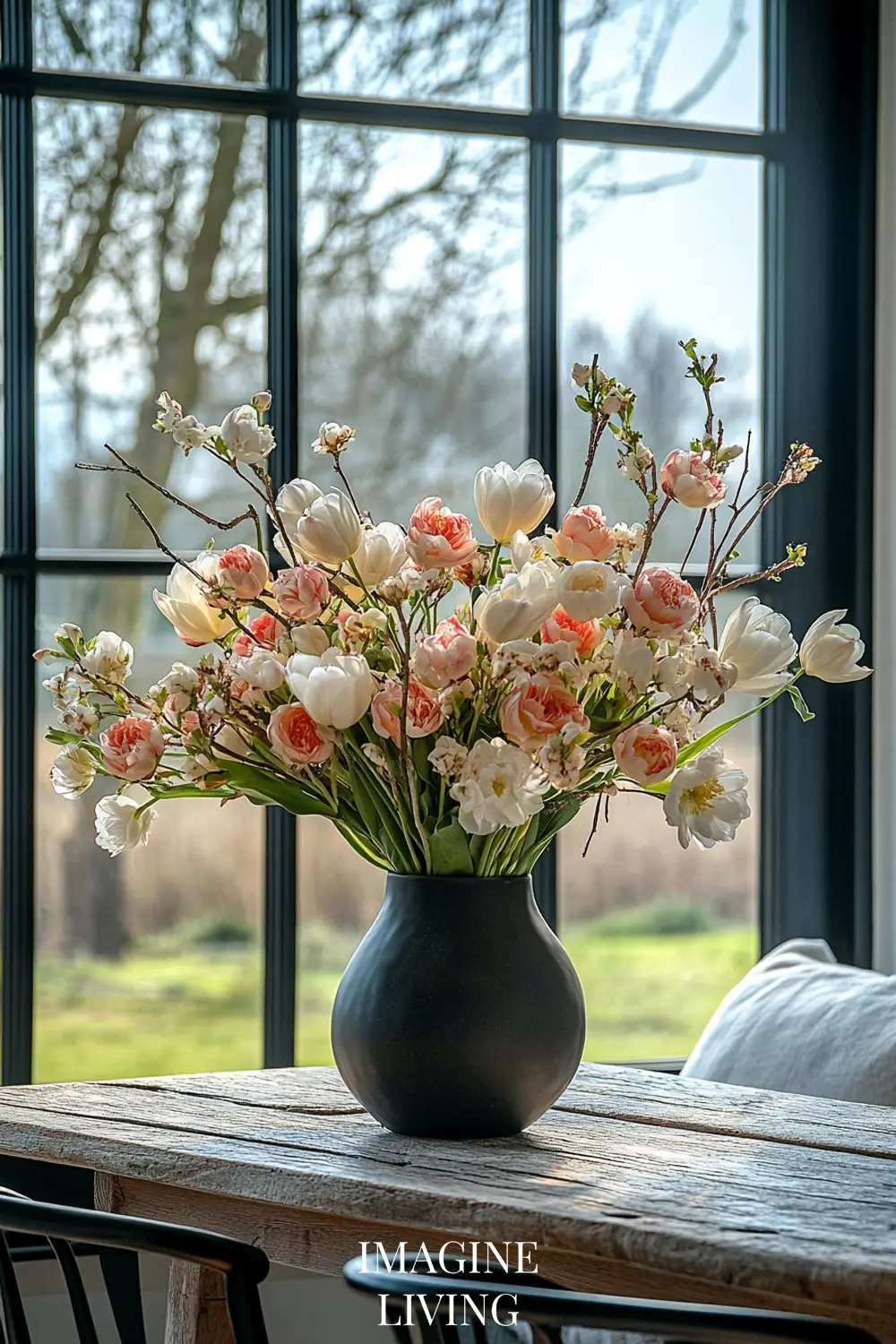
4. Vary Stem Heights for a Natural Look
A common mistake in floral arranging is keeping all flowers at the same height, which can make the bouquet feel stiff and unnatural. Instead, aim for a layered, dimensional look by trimming stems at different heights.
- Keep taller stems (like cherry blossoms) in the back or center for height.
- Place medium-height blooms (like tulips or peonies) around the focal flower for structure.
- Use shorter stems or fillers near the base to create a soft, overflowing effect.
💡 Tip: Hold the flowers loosely in your hand and arrange them naturally before trimming the stems—it’s easier to visualize the final shape before committing.
5. Pick the Right Vase for Your Arrangement
The choice of vase affects how the flowers are displayed and can enhance the overall aesthetic.
- Tall, slim vases – Best for sculptural flowers like cherry blossoms or branches.
- Rounded, ceramic vases – Ideal for lush, organic arrangements with peonies, tulips, and ranunculus.
- Rustic pitchers or glass jars – Create a relaxed, farmhouse-style bouquet.
💡 Tip: The vase opening should be smaller than the bouquet’s width—this keeps the flowers supported and prevents them from splaying out too much.


6. Arrange Flowers in a Spiral Technique
For a professional florist finish, use the spiral technique:
- Start with the focal flower and hold it at an angle.
- Add each additional flower slightly turned in the same direction, creating a layered spiral.
- Rotate the bouquet as you build it to ensure even distribution of flowers and greenery.
- Once complete, tie the stems together with twine before placing them in the vase.
💡 Tip: If your bouquet feels too tight, gently pull some flowers outward to create a more natural, airy look.
7. Keep Your Flowers Fresh Longer
To extend the life of your spring bouquet, follow these simple care tips:
- Trim stems every 2 days at a slight angle to allow better water absorption.
- Change the water every other day to prevent bacterial growth.
- Keep flowers away from direct sunlight or heat sources (which can cause wilting).
- Remove any wilted blooms to prevent them from affecting the fresher ones.
💡 Tip: For tulips, add a penny or a drop of vodka to the water—this helps them stand taller and last longer!
Bringing It All Together: A Masterpiece in Bloom
By carefully selecting colors, focal flowers, and greenery, you can create a spring bouquet that feels fresh, natural, and effortlessly elegant. Whether you prefer the structured refinement of peonies or the wild charm of foraged blooms, the art of floral styling brings the beauty of spring into your home.
Would you go for a wild and whimsical bouquet or a polished, classic arrangement? 🌸
Spring Bouquet Styling for Every Space
Where to Place Your Bouquets for Maximum Impact
- Dining Table – Use a large, wild arrangement as a statement piece.
- Entryway Console – Keep it simple with a tall, sculptural vase of cherry blossoms.
- Kitchen Counter – A small tulip bouquet in a ceramic vase adds an effortless spring touch.
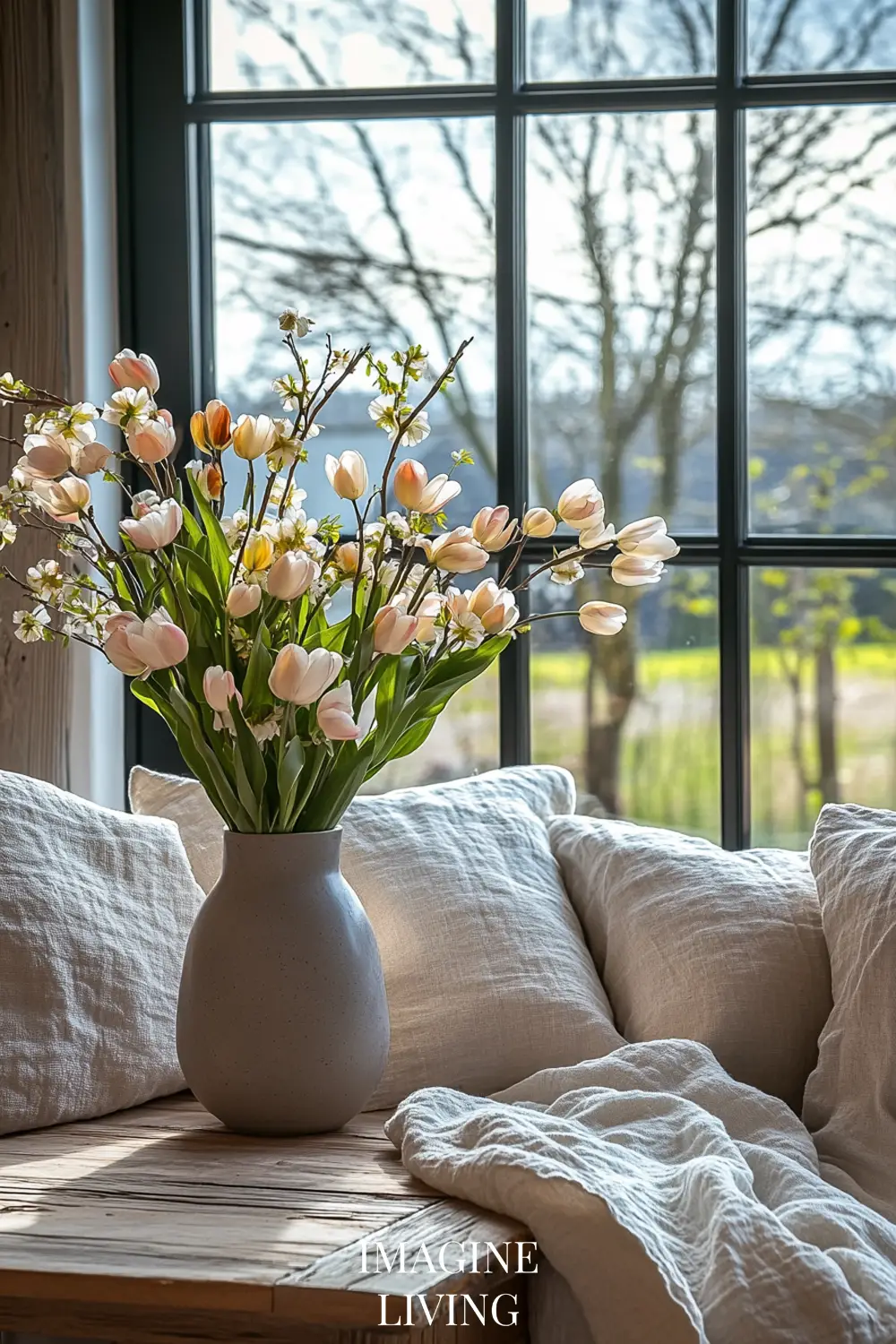
Understanding Spring Color Theory for Bouquets
Choosing the Right Palette
- Soft Pastels – For a romantic, airy feel (blush pink, ivory, pale lavender).
- Bold & Bright – Adds energy and warmth (orange ranunculus, deep pink tulips).
- Earthy Neutrals – Timeless and sophisticated (beige peonies, green eucalyptus).
How to Mix Colors for a Balanced Look
- Monochrome Bouquets – Keep it refined by sticking to one color in different shades.
- High-Contrast Pairings – Pair pale pink peonies with deep coral ranunculus for depth.
- Soft Blending – Use cream, blush, and soft yellow for an effortless gradient.
Sustainable and Seasonal Flower Choices
Eco-Friendly Ways to Style Spring Bouquets
- Buy Local & Seasonal – Choose fresh, locally grown flowers for sustainability.
- Dried Floral Arrangements – A long-lasting, eco-conscious alternative.
- Potted Bulbs – Keep spring alive longer with planted daffodils and hyacinths.
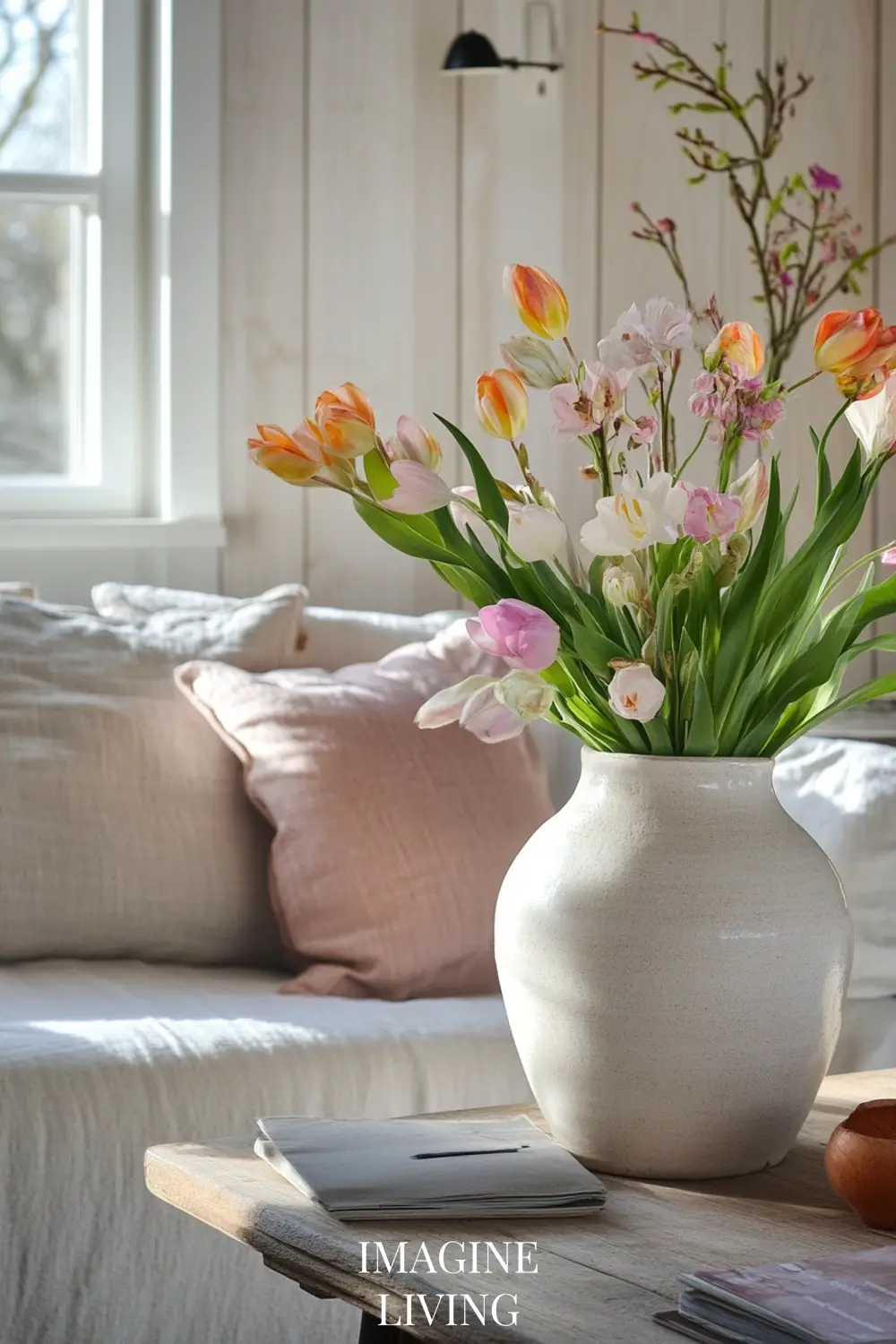
Mistakes to Avoid in Spring Bouquet Styling
Common Errors & How to Fix Them
- Cutting Stems Incorrectly – Always trim at an angle to extend flower life.
- Overcrowding the Vase – Let flowers breathe for a more natural look.
- Ignoring Water Needs – Change water every 2 days and trim stems to prevent wilting.
Final Thoughts: Choosing Your Spring Bouquet Style
Whether you prefer the wild, free-flowing beauty of wildflower bouquets or the refined elegance of structured spring arrangements, this season’s blooms offer endless inspiration.
Embrace the joy of seasonal floral styling and experiment with colors, shapes, and textures to create the perfect bouquet for your home.
Which spring floral style do you love most—wild and organic, or classic and timeless?

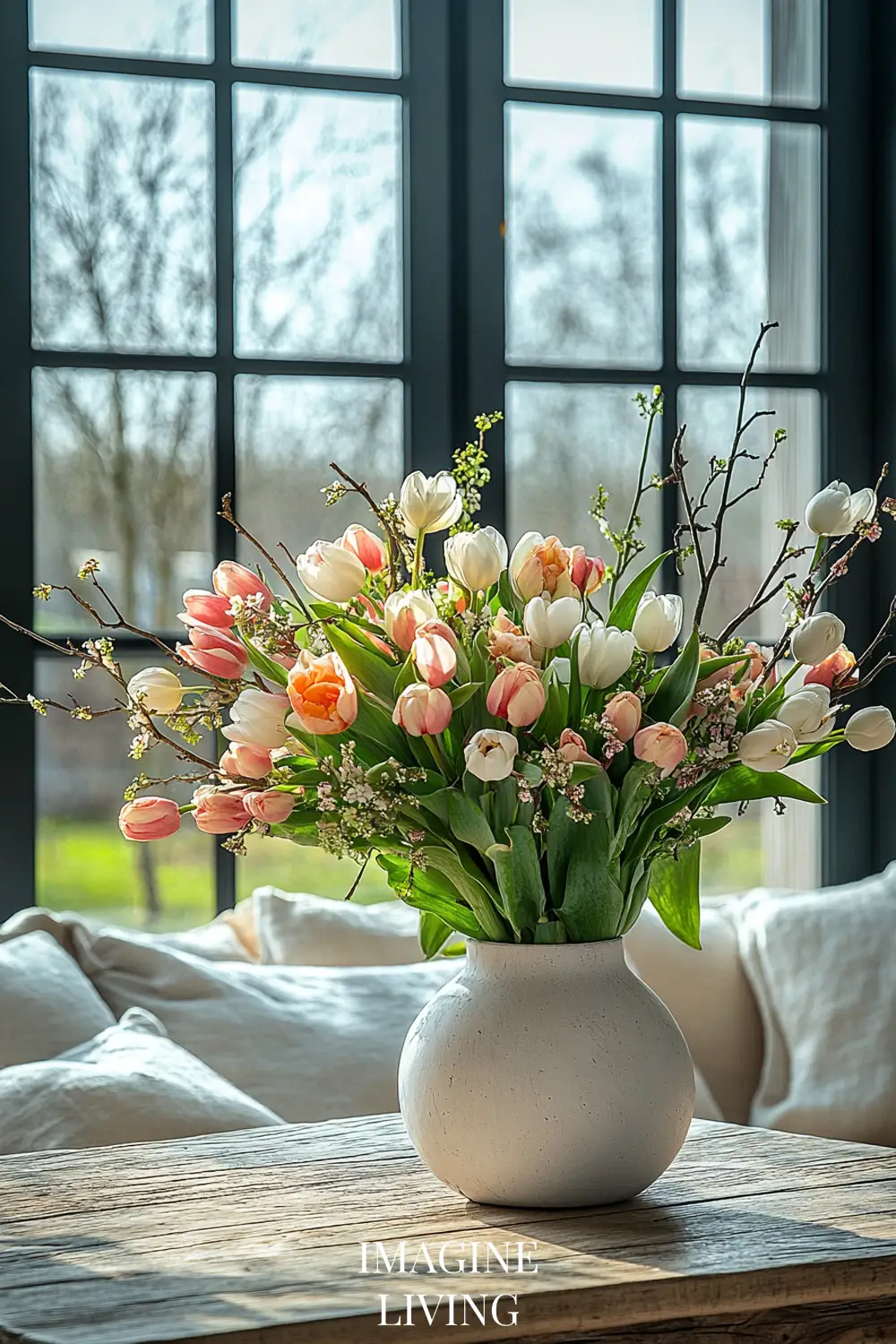
A timeless spring bouquet that blends natural beauty with classic elegance. Featuring soft white and peach tulips, delicate flowering branches, and wispy greens, this arrangement brings a light, airy feel to any space. Perfect for a rustic yet refined centerpiece, it effortlessly captures the essence of early spring. Placed in a minimalist ceramic vase on a rustic wooden table, it evokes a sense of warmth and seasonal renewal.


